“Lesson 4,” a voice blasted from the MP3 player of the man sitting across from me. It was the only noise on an otherwise quiet bus, the bumble of which had put my sister to sleep. We had begun our journey in Chinatown, and now, as I stared out the window, hypnotized by the blur of branches that line the road from New York to Philadelphia, it occurred to me: the dark humour in taking a bus to prison.
Eastern State Penitentiary, or ESP, was once the most famous and expensive prison in the world, before it was shut down in 1971. It lay abandoned for 10 years, home only to invading vegetation and stray cats. In 1994, The City of Philadelphia reopened its doors to the public.
We were a half hour away from walking through those doors. And then the bus broke down.
“At least we got access to food and shelter,” the bus driver cooed in her Jamaican accent, much to the horror of the man with the mp3 player who had only reached level 5 of his language tapes.
A separated wheel had left us sandwiched between a Popeye’s and Dunkin’ Donuts.
I was ready to escape with Uber – I did not come all the way to Philly for donuts and fried chicken – but my panic was short-lived. Ten minutes later, another bus showed up and we were soon on our way again.
After a short taxi ride from the bus centre to Fairmount Avenue, we arrived at the prison. Its sheer size took me by surprise; it looks like a castle, complete with high stone walls and turrets.
I smiled with excitement. This was so much better than donuts and fried chicken.
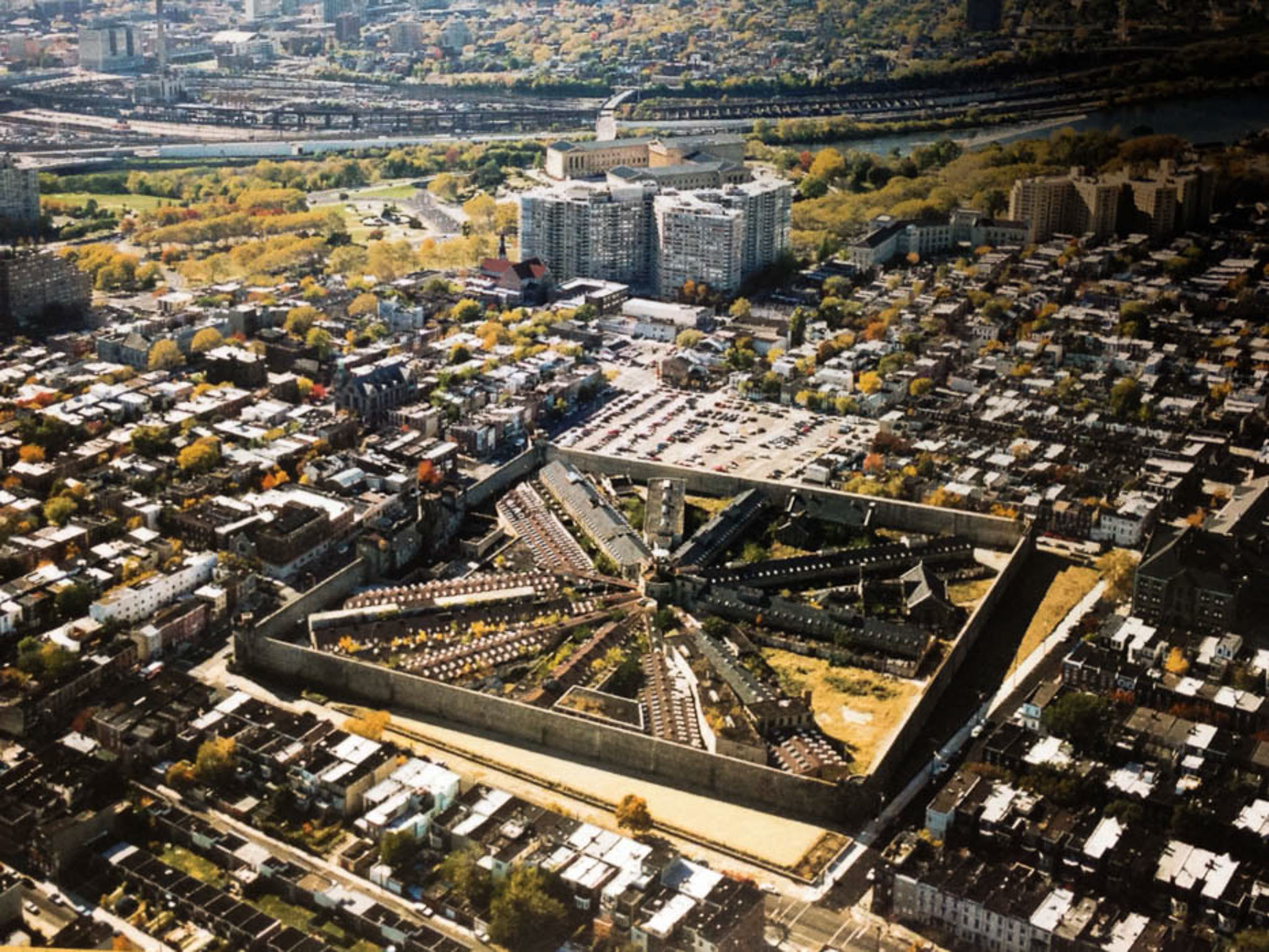
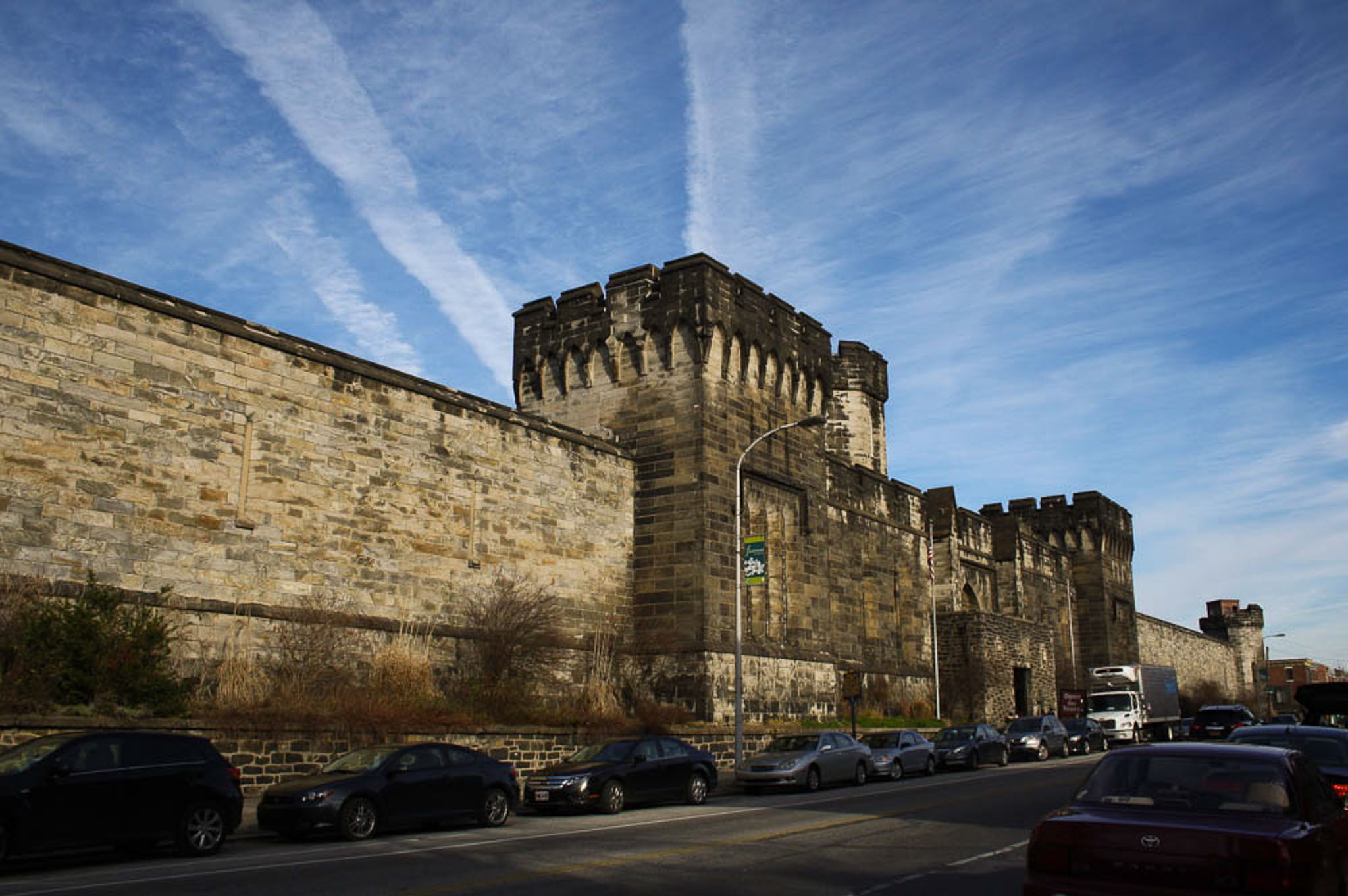
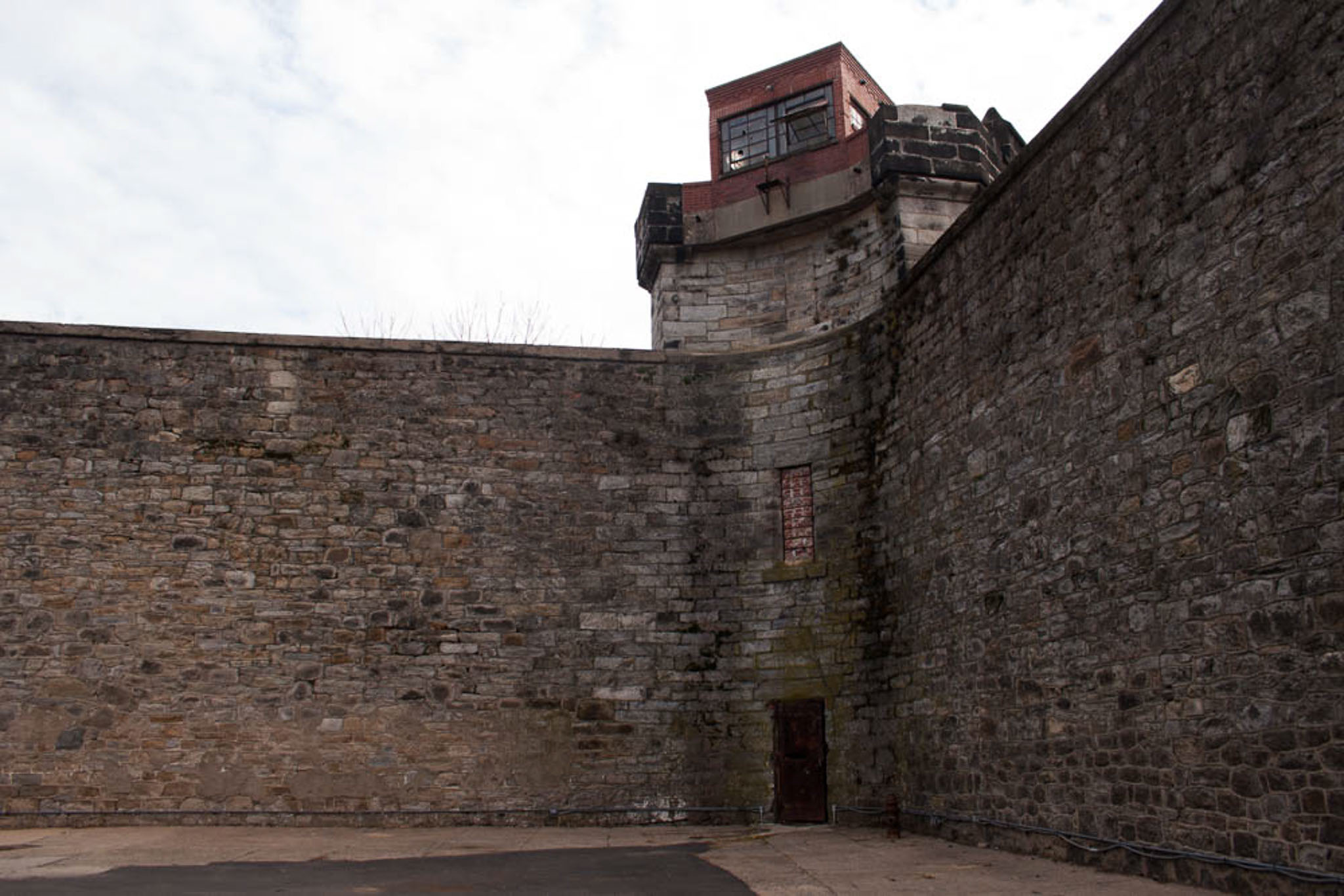
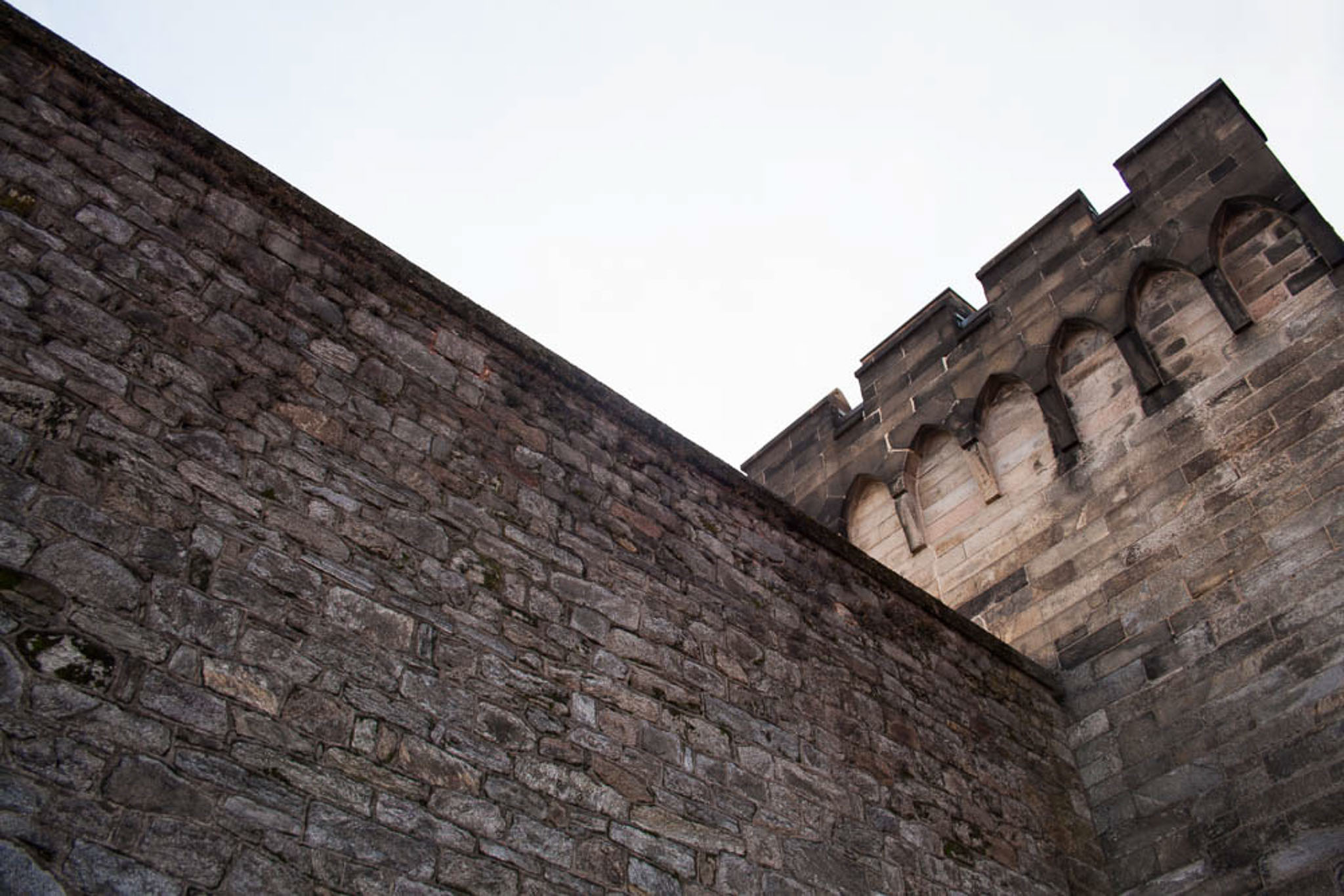
But on the other side of the wall, when I looked up at one of the guard towers on the corner, a shiver went down my spine. I realised I had never actually been in a real prison before. The fact that it was now a museum didn’t make it feel any less real.
If the idea of being inside a prison wasn’t scary enough, I had read the countless stories of wailing, giggling, whispers and footsteps heard and seen inside.
I put on the audio headset, took a deep breath, and stepped inside the first cellblock.
In contrast to its gothic exterior, the inside of ESP is surprisingly open and airy. The long, barrelled hallways have high ceilings with skylights and tall, arched windows.
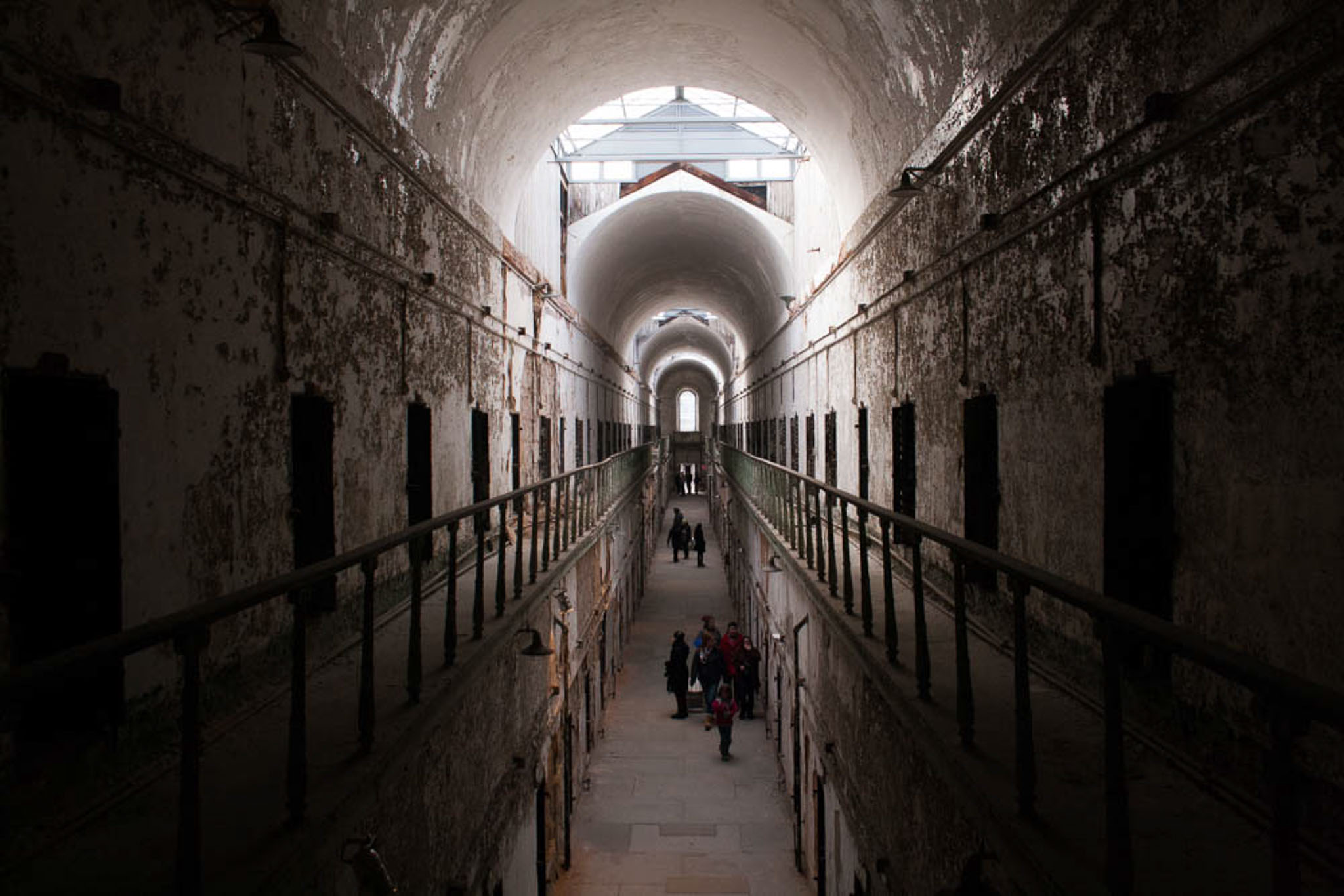
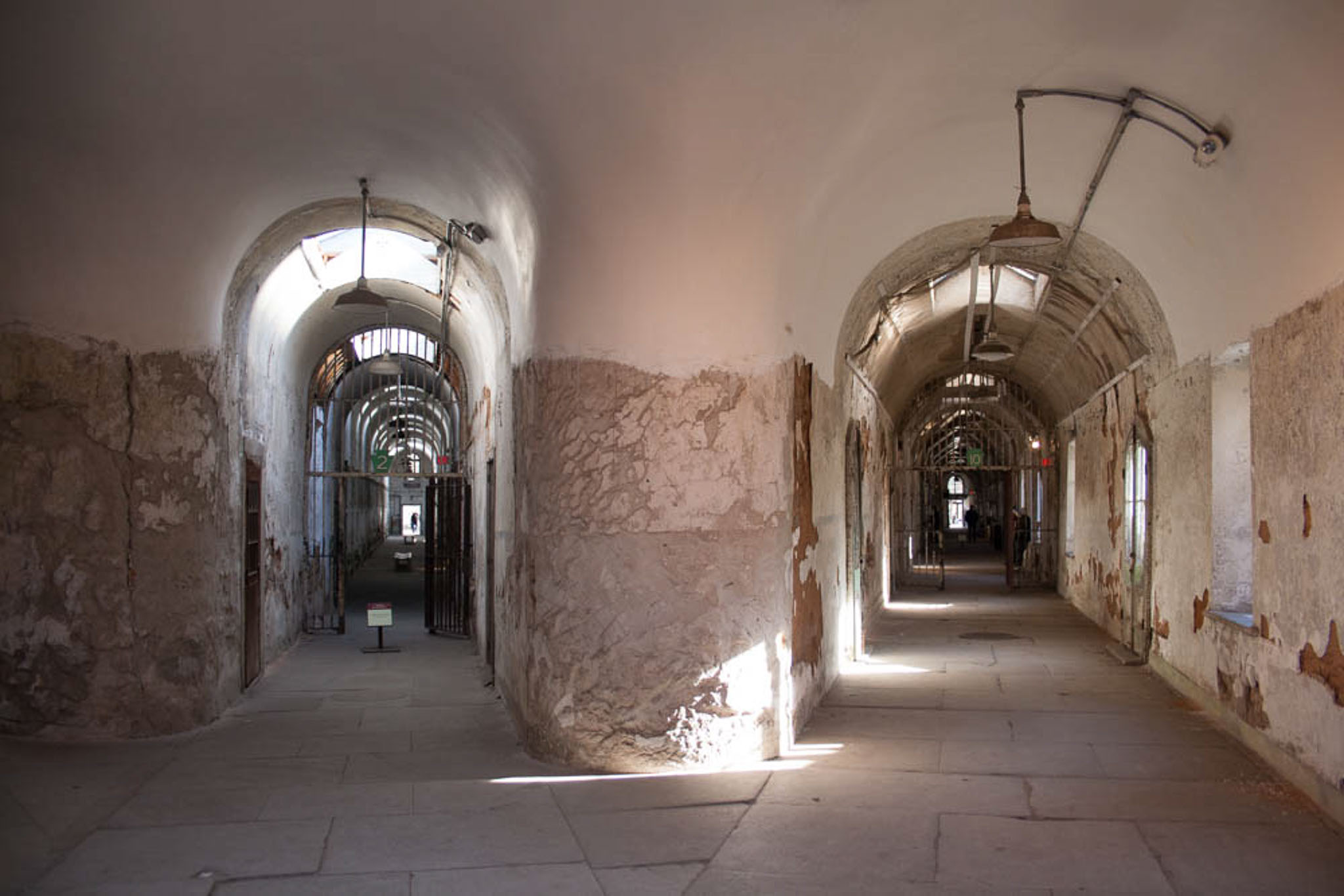
From a central rotunda, 15 cellblocks (originally only 7) radiate out. This hub-and-spoke design was revolutionary at the time it was built in the 1820s. Most prisons were basically giant holding pens, keeping every convict, from pickpockets to murderers, behind a locked door to deal with each other. Corporal punishment was administered by the guards whenever there was trouble.
But ESP was an idea born in the Enlightenment, and its architect, John Haviland, wanted to design something that upheld its grand vision: the prison would not serve simply to punish the prisoners, but move them towards real repentance for their sins (hence ‘penitentiary).
It was believed that keeping the prisoners in solitary confinement and having them to do honest work, like shoemaking and weaving, would force them to think about the atrocities they had committed.
In addition to a skylight, each cell was equipped with central heating, running water, a flushing toilet and a private exercise yard. Not even the White House had central heating or indoor plumbing at that time.
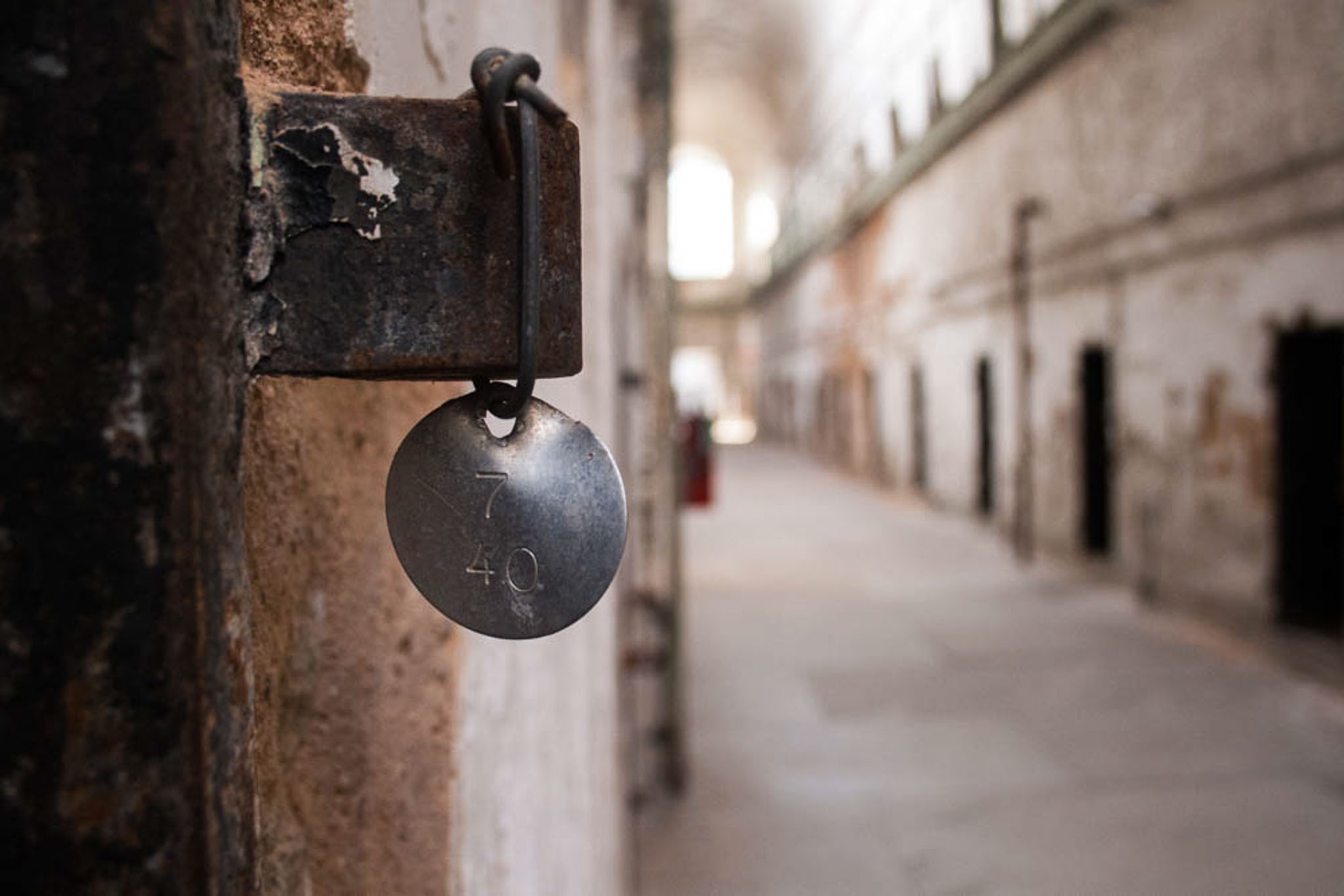
But the new “Pennsylvania System” of incarceration kept prisoners at ESP in their cells 23 hours a day, with only themselves and their bibles for company. They ate and exercised alone, communication with other inmates forbidden. When they left their cells they were hooded, the low doors forcing them to bow on every exit and entrance.
In desperate need for human contact, the inmates began to tap on pipes and whisper to each other through vents. If they were caught, severe consequences awaited them.
Popular methods of torture punishment included the ‘water bath’, where prisoners were submerged in ice water in the winter and literally hung up to dry overnight.
There was also the ‘iron gag’, a collar clamped onto the tongue of the prisoner and then chained to his wrists behind his back. Any movement at all would cause his tongue to tear, often resulting in victims bleeding to death.
And then there was the ‘mad chair’, in which inmates were strapped so tightly that their circulation was cut off, left to sit for days without food. In the best cases, limbs had to be amputated. In the worst, prisoners were driven to insanity.
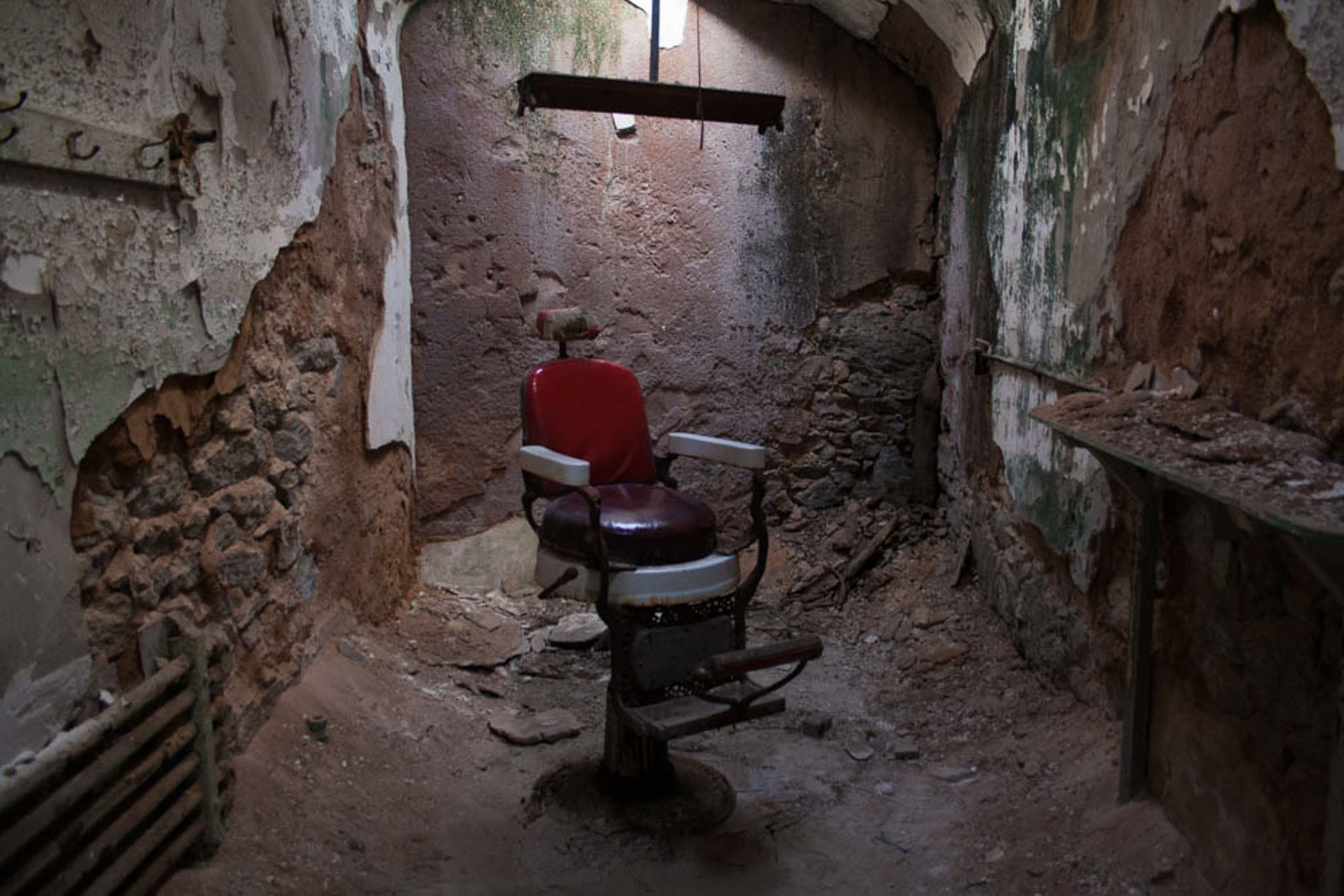
Since the inmates were not allowed visitors or letters, the abuse went largely unnoticed outside the prisons walls.
It was only in the 1830s and 40s when people began to visit the prison to marvel at its architecture that a public discourse on the effects of solitary confinement really began.
Some people saw merit in the new system but others, like Charles Dickens, despised it completely.
In 1913, the Pennsylvania System was finally abandoned. But the effects of it lived on inside the walls of ESP.
Prisoners and guards began reporting strange sightings as early as the 1940s, and today people still report that they see or feel strange things when visiting.
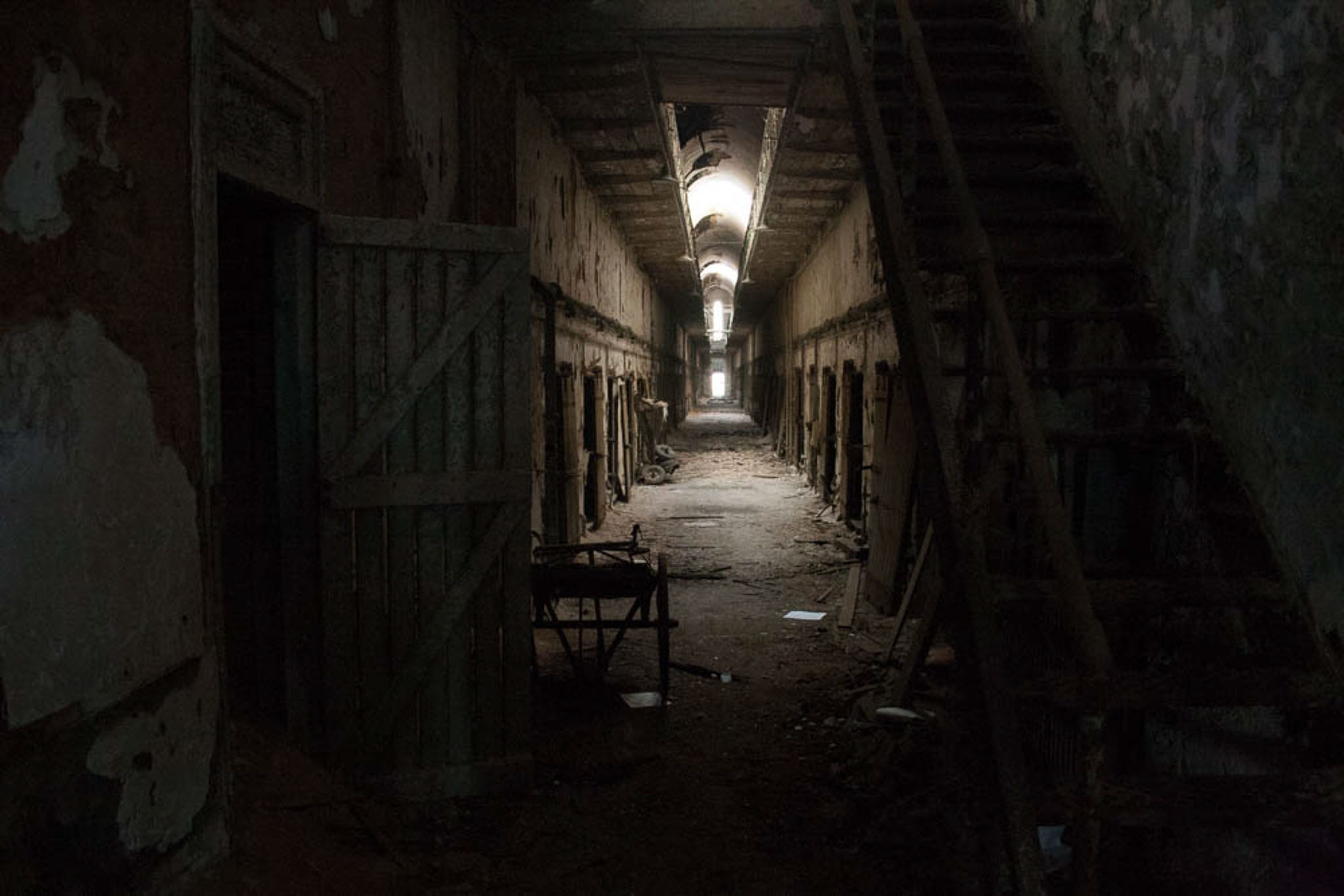
ESP has capitalised on this by running a haunted house every year from September through November to raise funds. It’s a popular attraction, and I understand why, but I personally don’t like the idea – would you throw a party on the wards of Bedlam?
Roughly 75 000 prisoners spent time behind ESP’s bars, and although it’s true that many of them were dangerous criminals, sometimes the punishment was horrendously brazen for the crime.
Whether you believe in ghosts or not, there is definitely energy about the place. You can feel it as you walk past each cell, all in various stages of ruin. Some of the doors lie open; offering a glimpse of what life must have been like for its occupants. Others are closed and bolted.
You can almost imagine the people who lived in the prison; it’s as if their personalities are reflected in each cell’s appearance. There are dozens of them, cookie cut, yet none that look the same.
In the few where it is allowed, I caught myself silently asking for permission to enter.
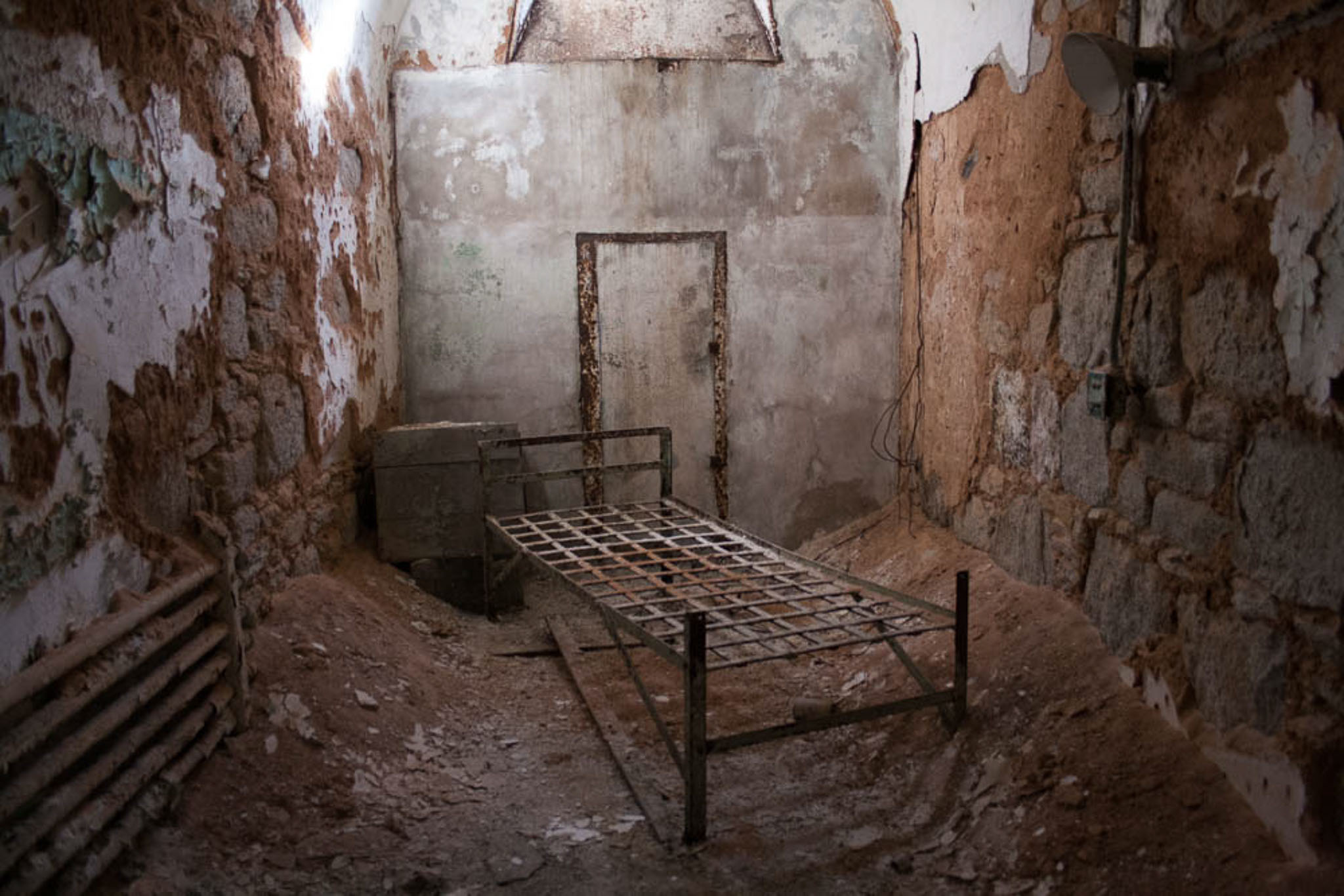
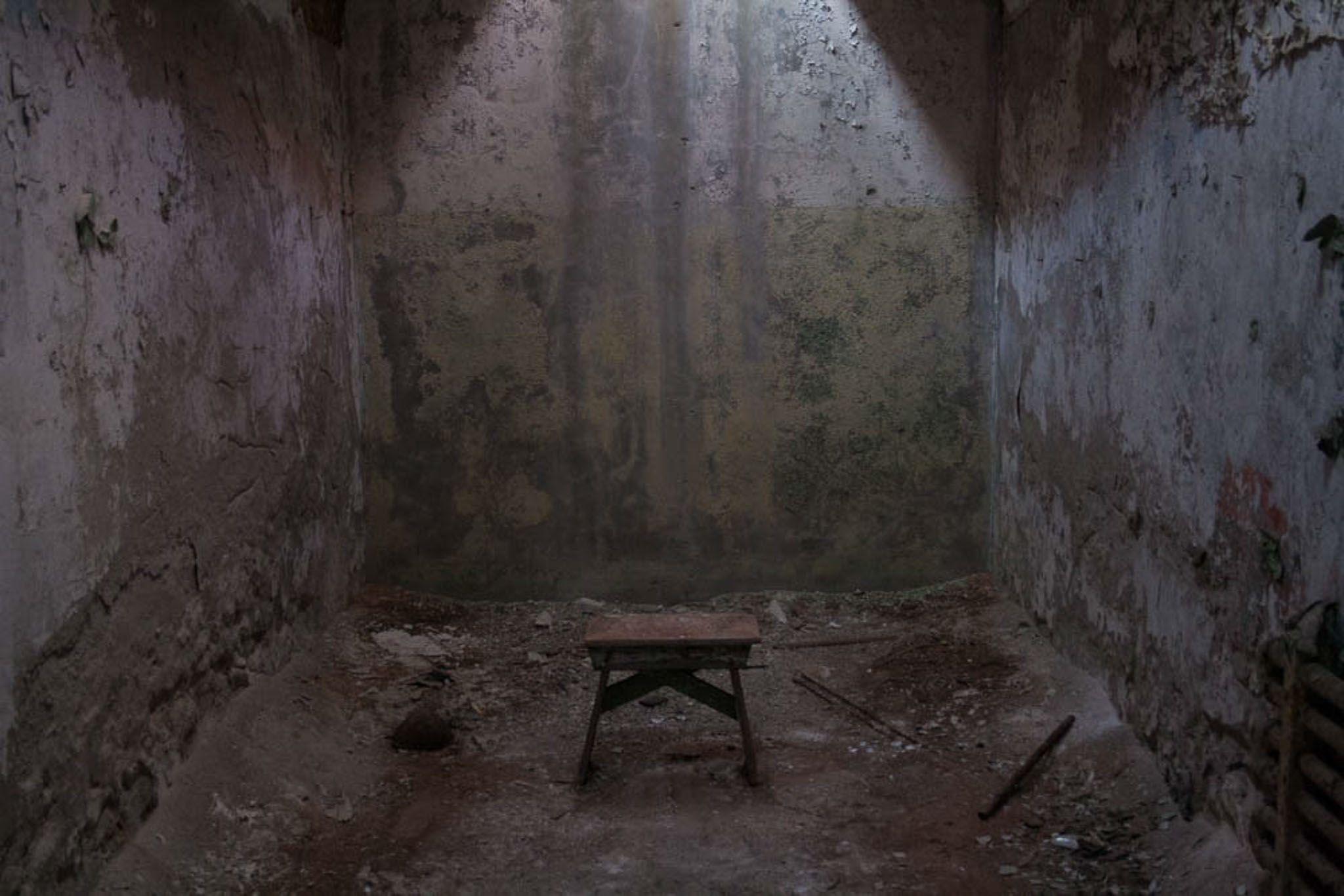
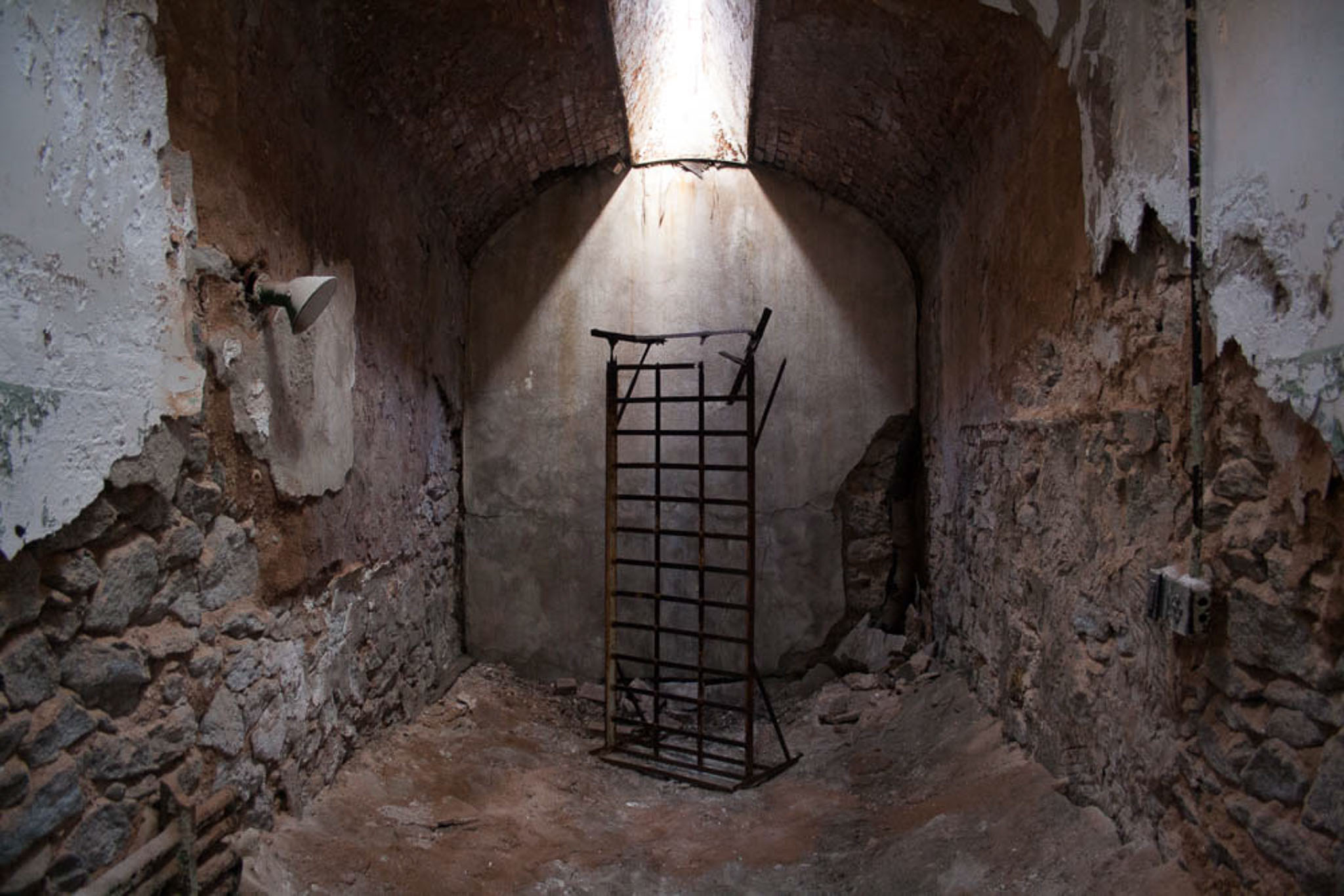
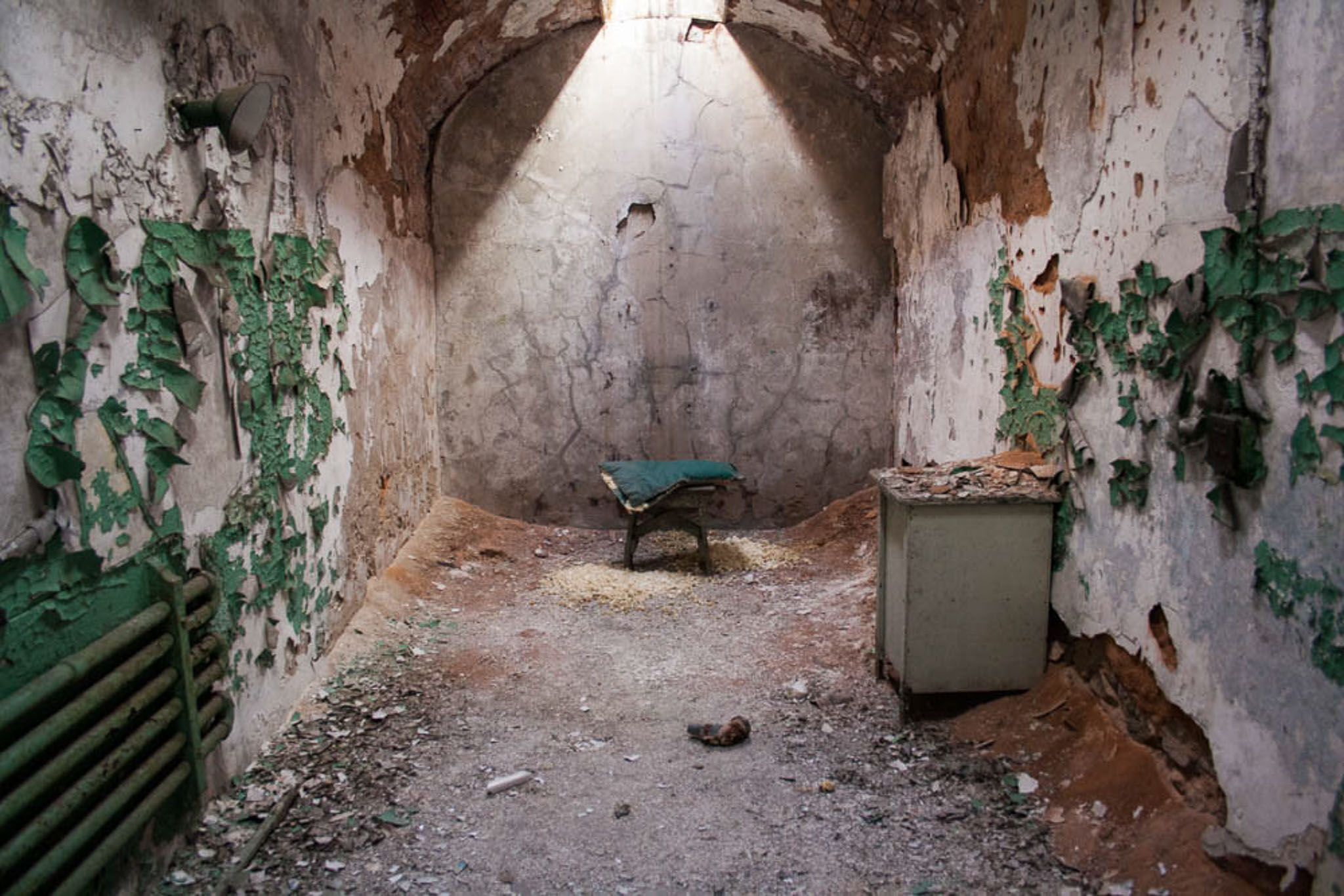
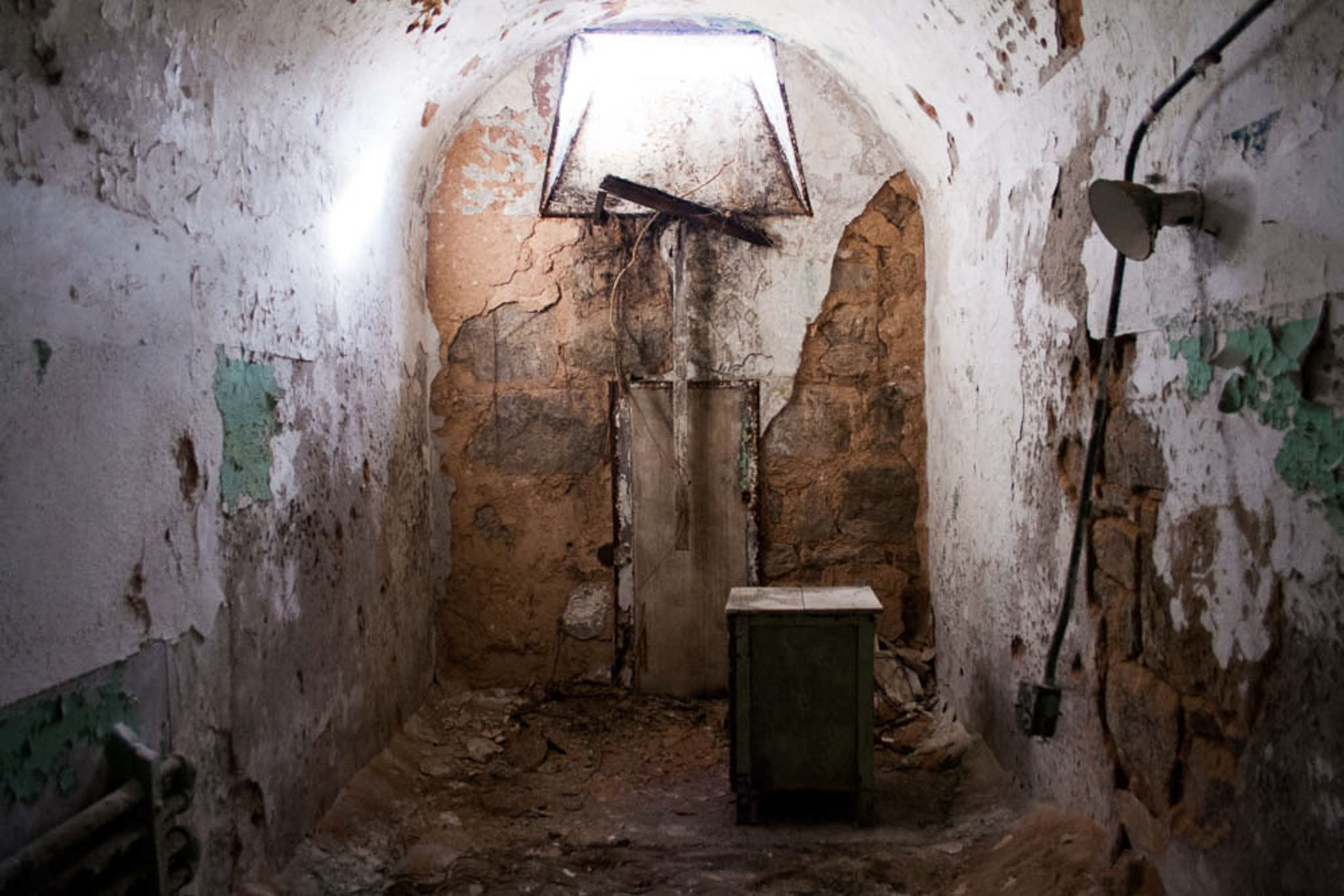
There is a boatload of information on display around the prison, covering both ESP’s 142-year history and the state of the incarceration system today. The prison also houses an impressive collection of art installations and exhibits.
In Michele Handelman’s Beware the Lily Law, for example, you are invited into a dark cell that has been made up with a bed and blanket. On the wall, the image of a person in orange overalls is projected, creating the illusion that the prisoner is standing in the cell with you.
Three different people each deliver a monologue dealing with issues that transgender male and transgender female inmates deal with being housed in female prisons.
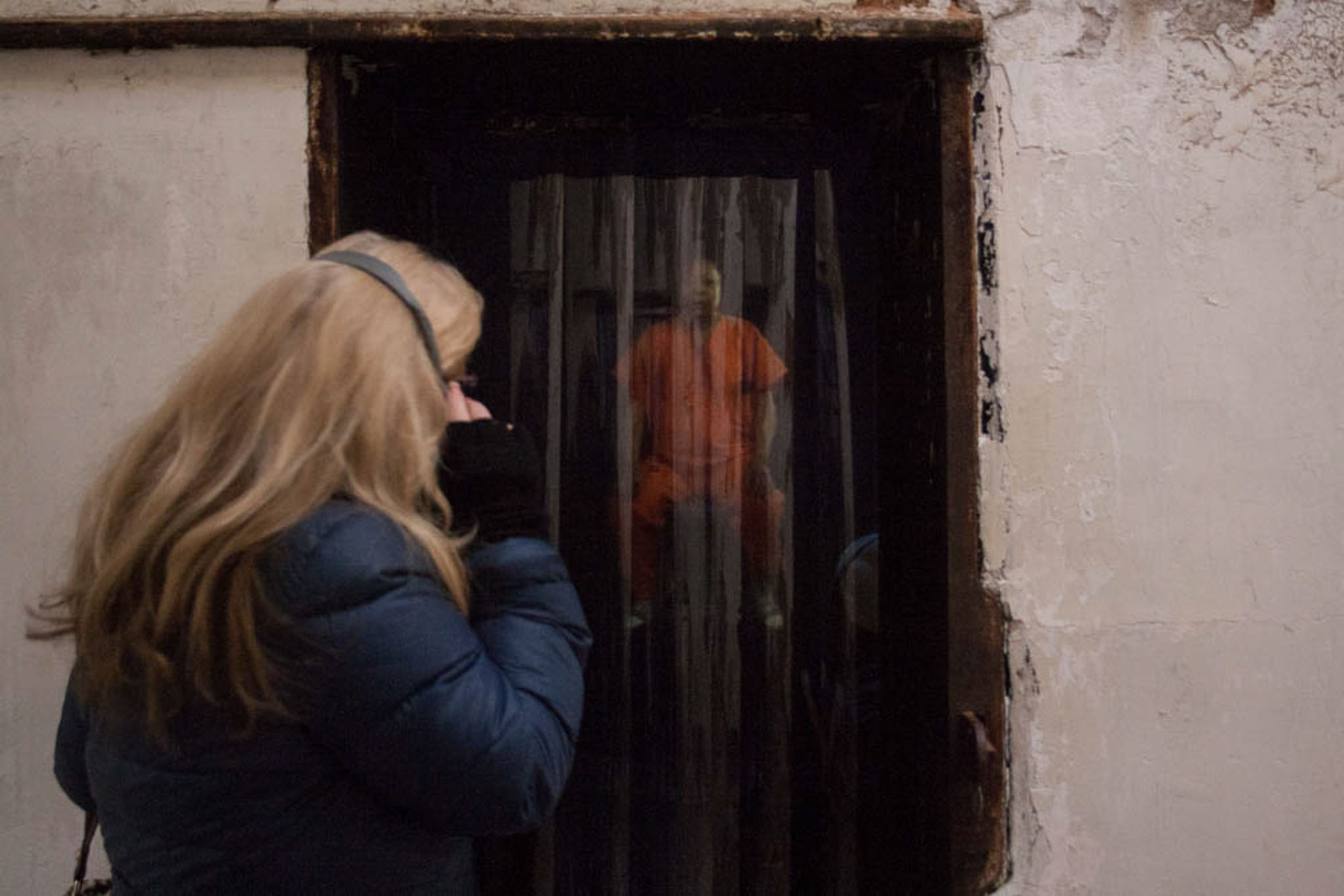
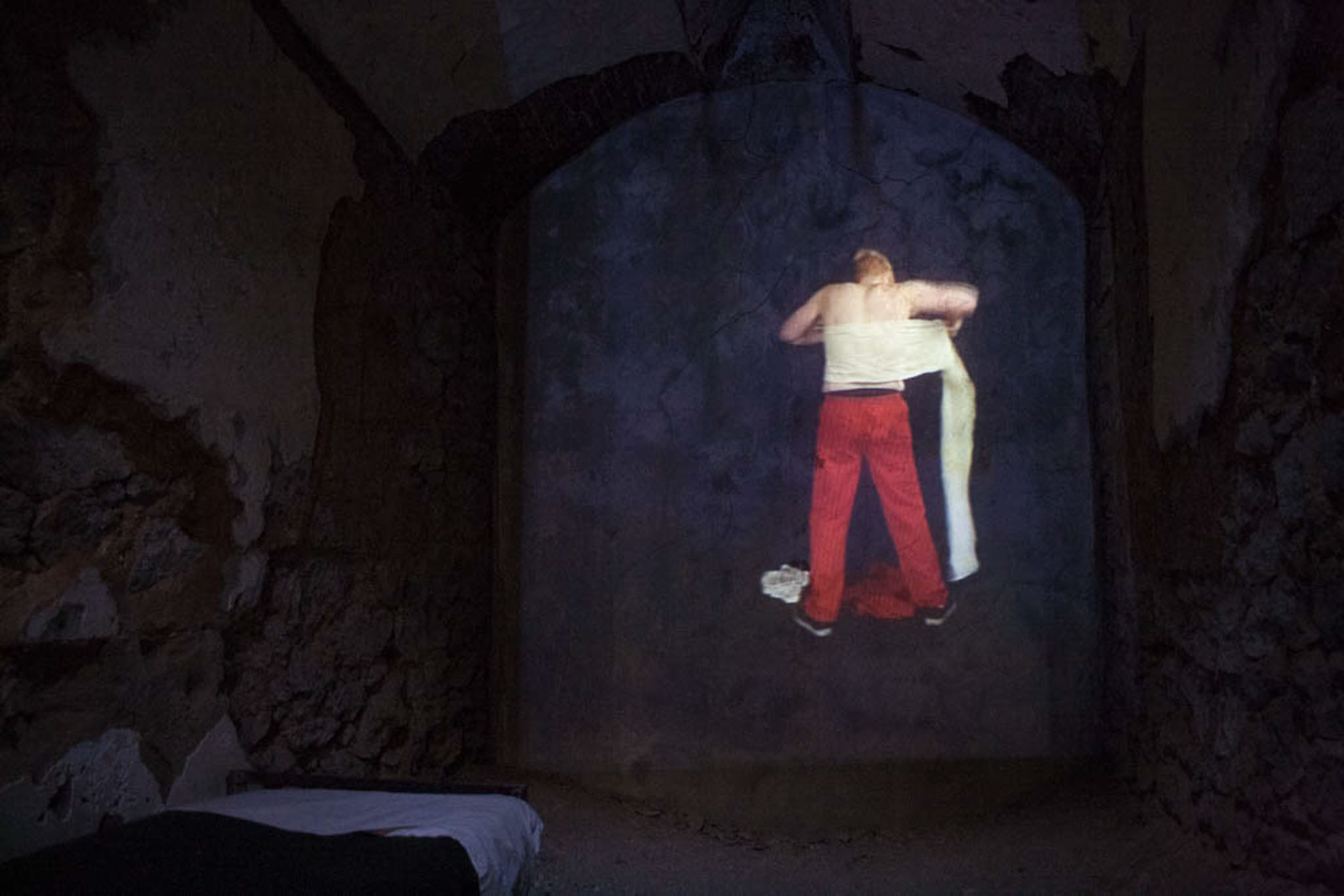
Danielle didn’t want to go into any of the cells so I watched the exhibit on my own. When I came out (hitting my head on the low arch), she told me that she had heard the woman standing next to her tell her friend, “I can feel someone is here”.
One of the exhibits that has really stuck with me is William Cromar’s GTMO, in which a prisoner’s cell from Camp X-ray in Guantanamo Bay has been recreated inside one of ESP’s cells.
I also enjoyed Greg Cowper’s Speciman, which includes over 500 insects and invertebrates collected by ESP prisoners from the grounds of the penitentiary.
In another cell, a makeshift cinema was set up, screening a documentary about the 1945 tunnel escape from Cellblock 7.
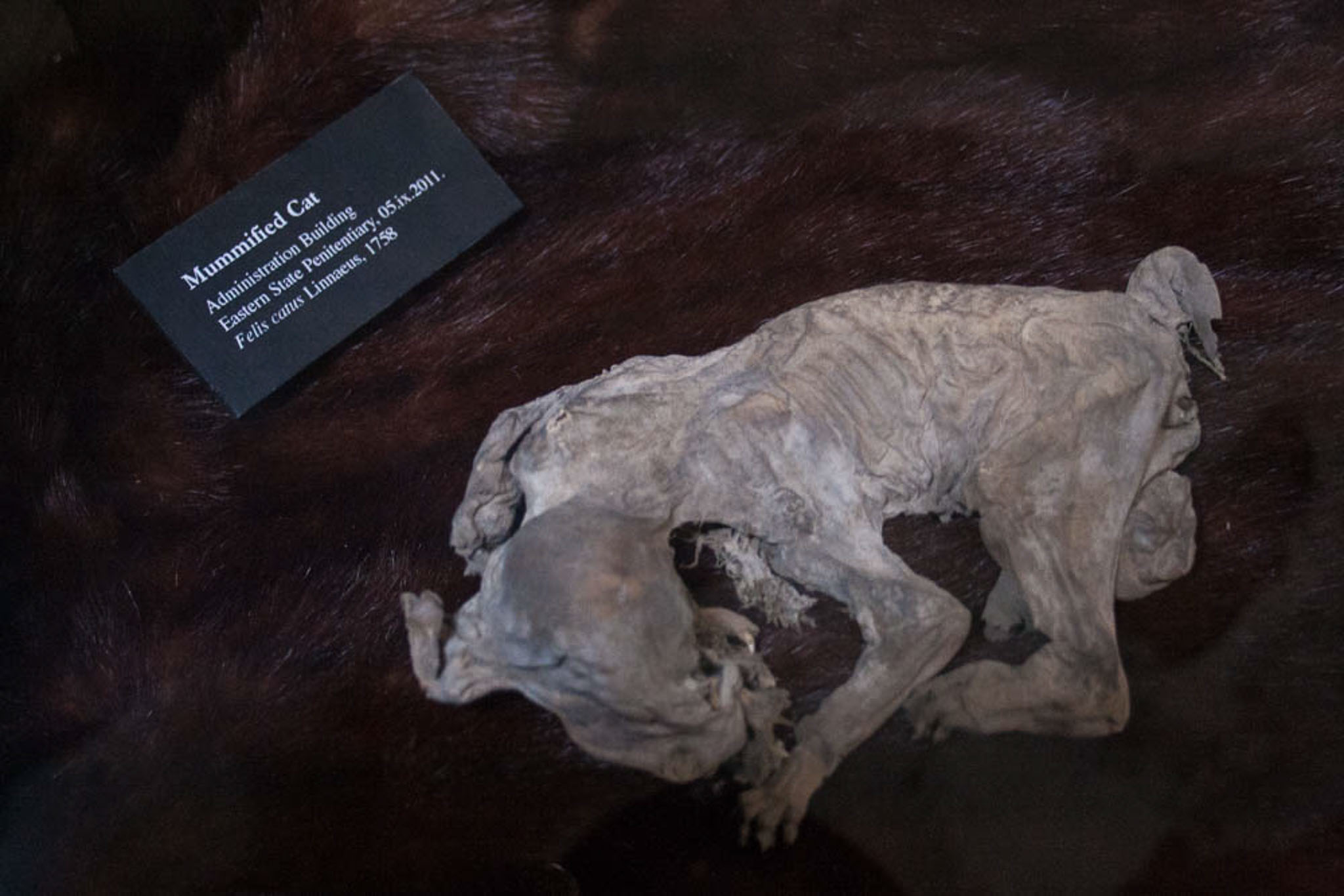
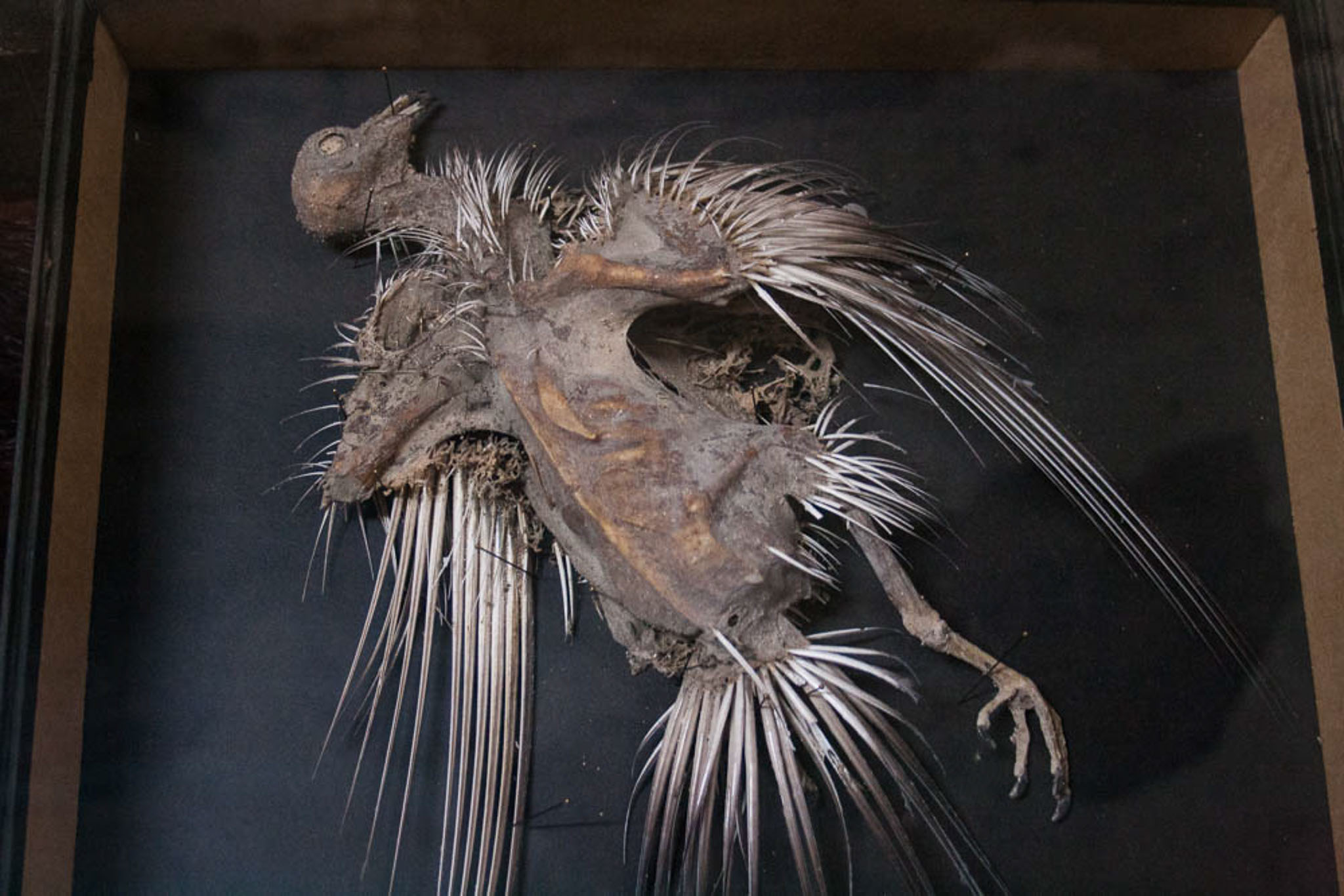
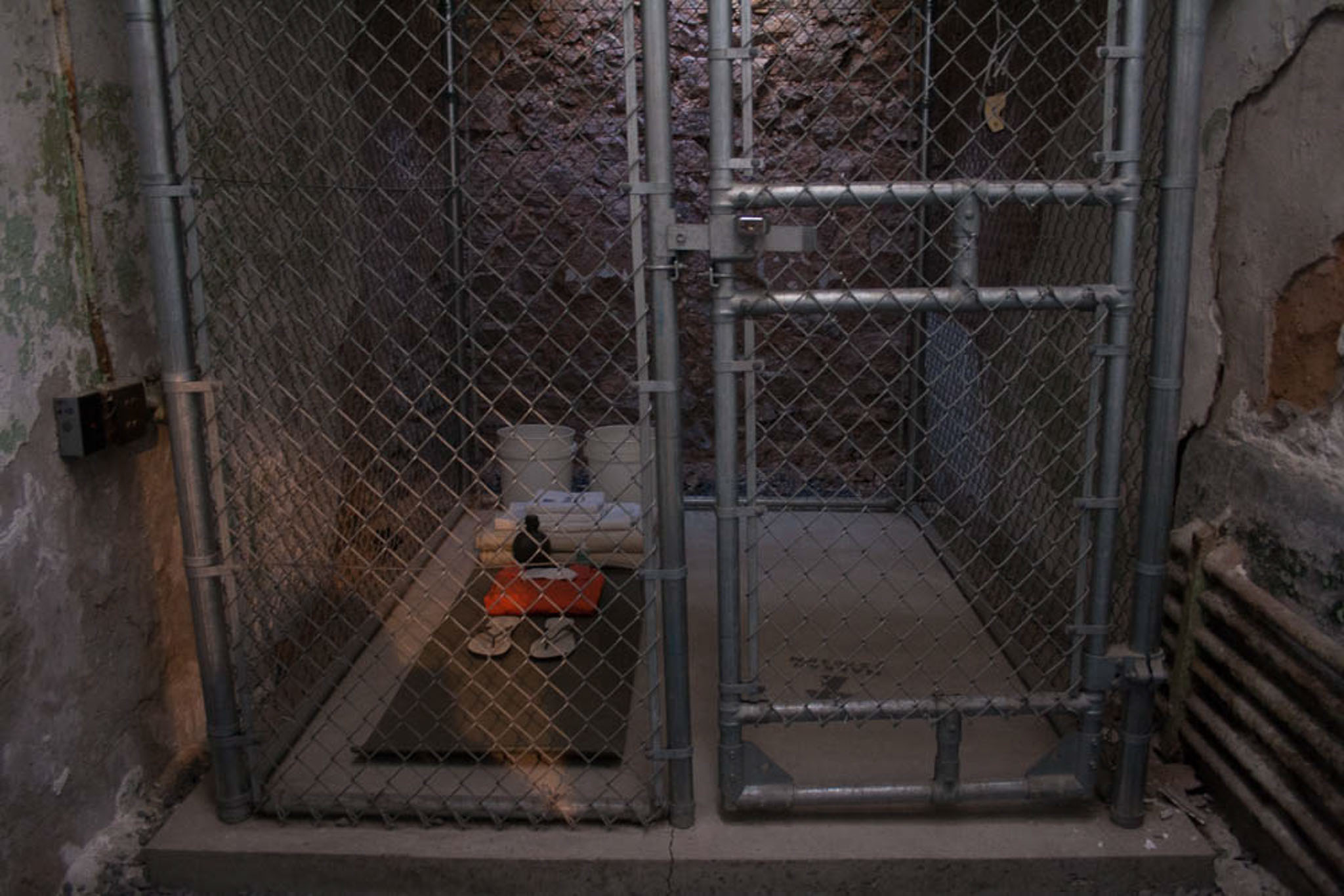
The escape mission was led by Willie Sutton, a notorious bank robber who attempted to break free 5 times during his 11 years of incarceration. The 1945 attempt was ultimately a bust, but the tunnel still exists, despite guards at the time claiming to have filled it in with cement.
The prisoners’ efforts got them thrown in the Klondike– a group of secret, underground cells built by ESP guards illegally in the mechanical space of one of the cellblocks. The ‘hole’ had no light and was not big enough to stand or lie down in. Unruly inmates were kept in there for weeks at a time, with just bread and water for food, and rats and roaches for company.
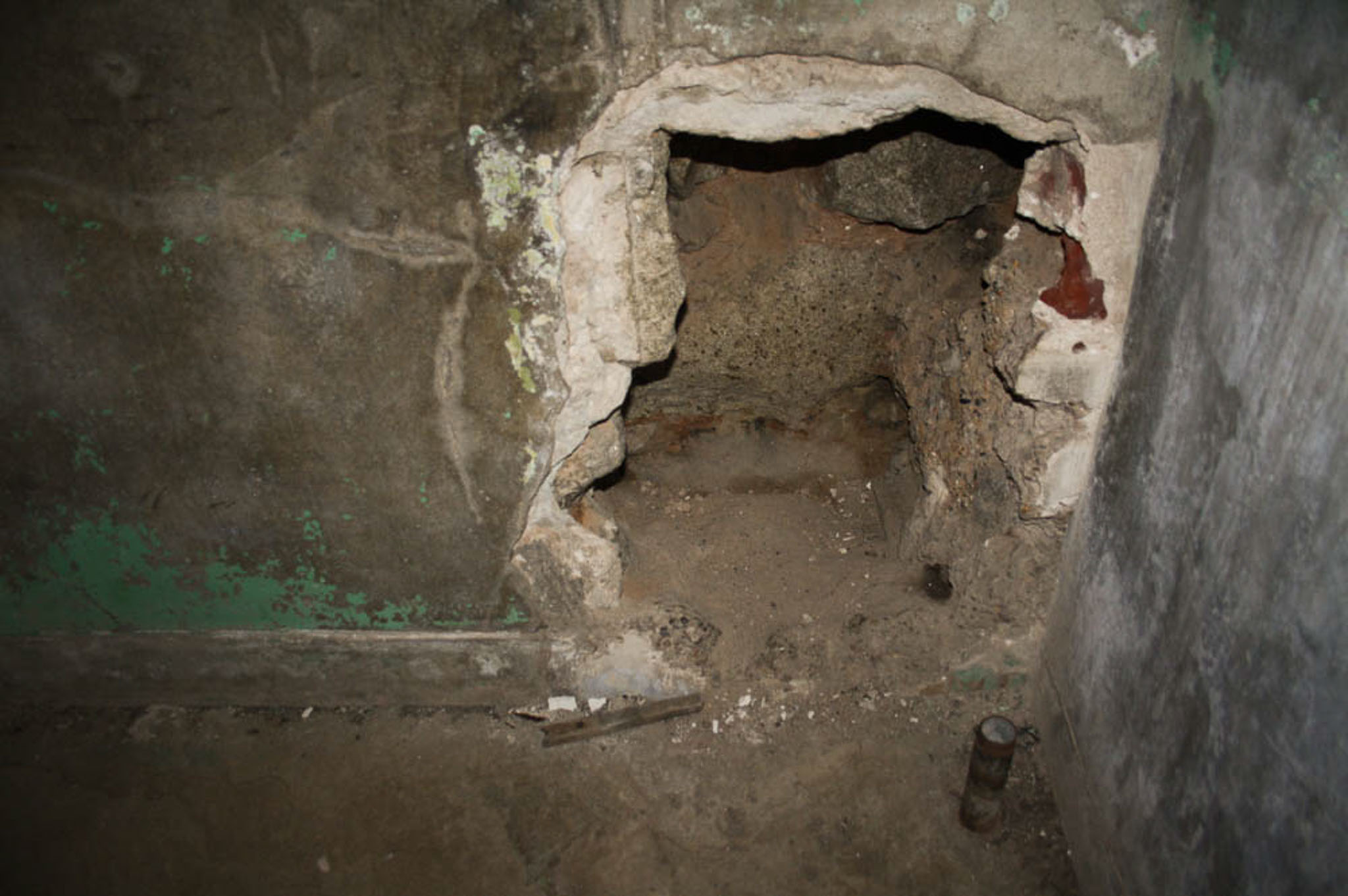
ESP was also home to Al Capone for 8 months, who enjoyed luxuries other prisoners could never dream of. His cell was pimped out with Persian rugs, expensive wooden furniture and a cabinet radio, leading to his cellblock being dubbed “Park Avenue”.
And then there was Pep, a black Labrador retriever sent to prison for killing the Governor Gifford Pinchot’s wife’s cat. Prison records show that Pep was given a prison number and had his mugshot taken, but the real reason he ended up at Eastern State, nobody seems to know.
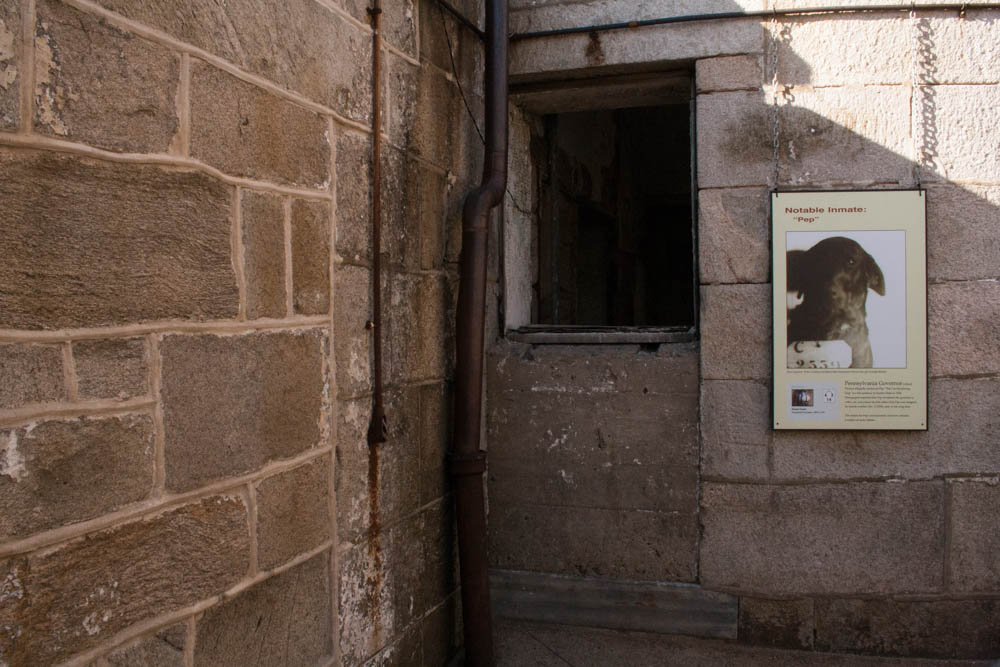
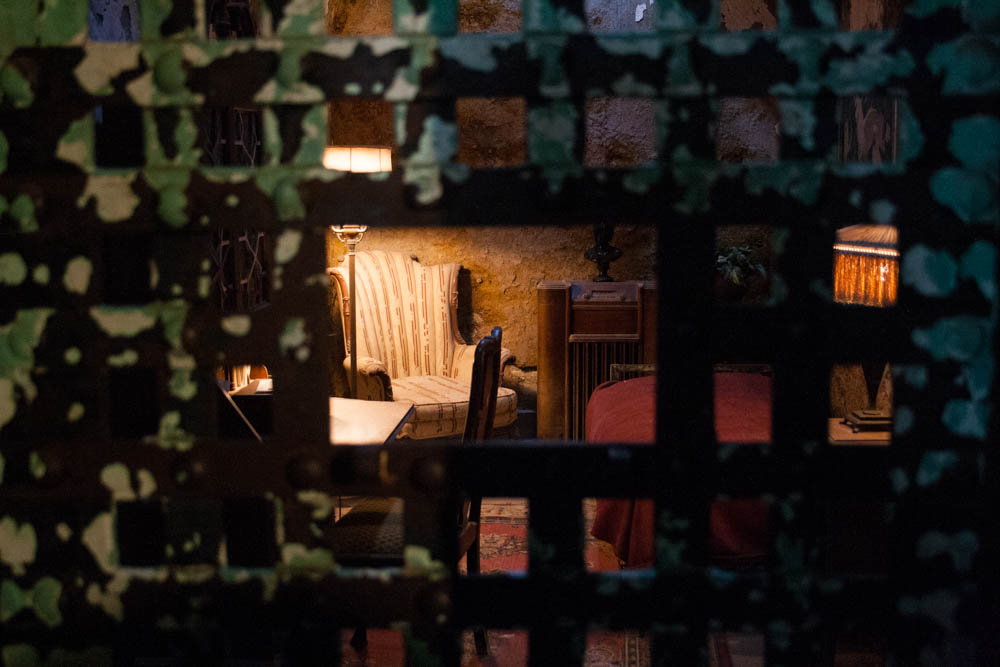
In the former machine shops of the prison, off the side of the baseball diamond in the exercise yard, is another cool exhibition called Tower Cam. The room it’s housed in is pretty much in ruin, but some space has been cleared for posters and the reconstructed guard tower.
If you stand at its rails, you can operate the camera. It spins 360°, providing a complete view of the prison grounds, the same view the guards would have seen from the central surveillance tower on top of the rotunda.
I was in the room alone and I would be lying if I said it wasn’t a little unsettling. When I heard something shuffle in the debris, I made a swift exit.
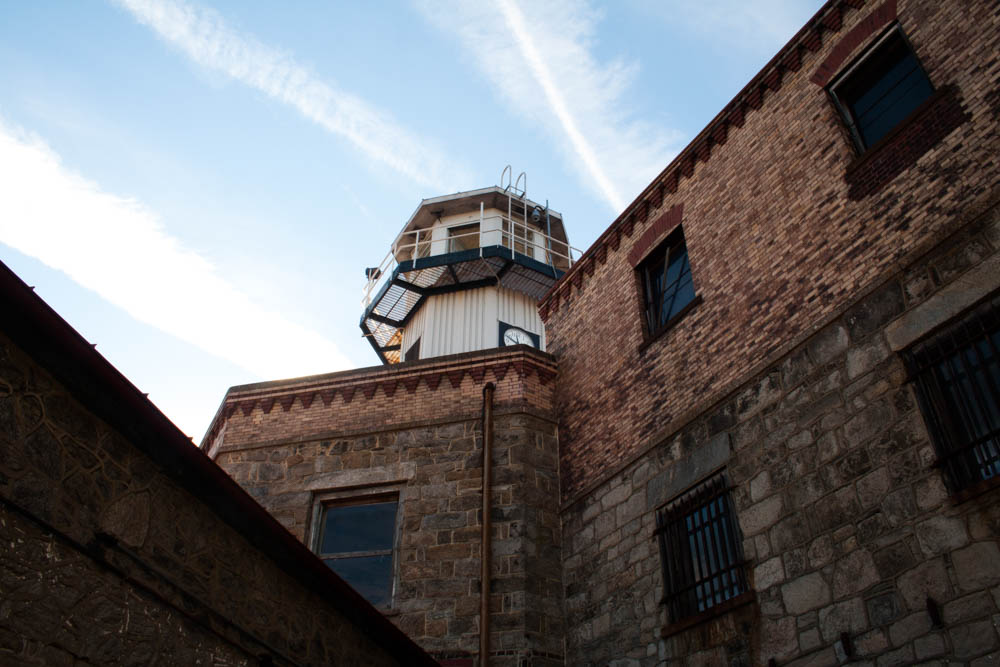
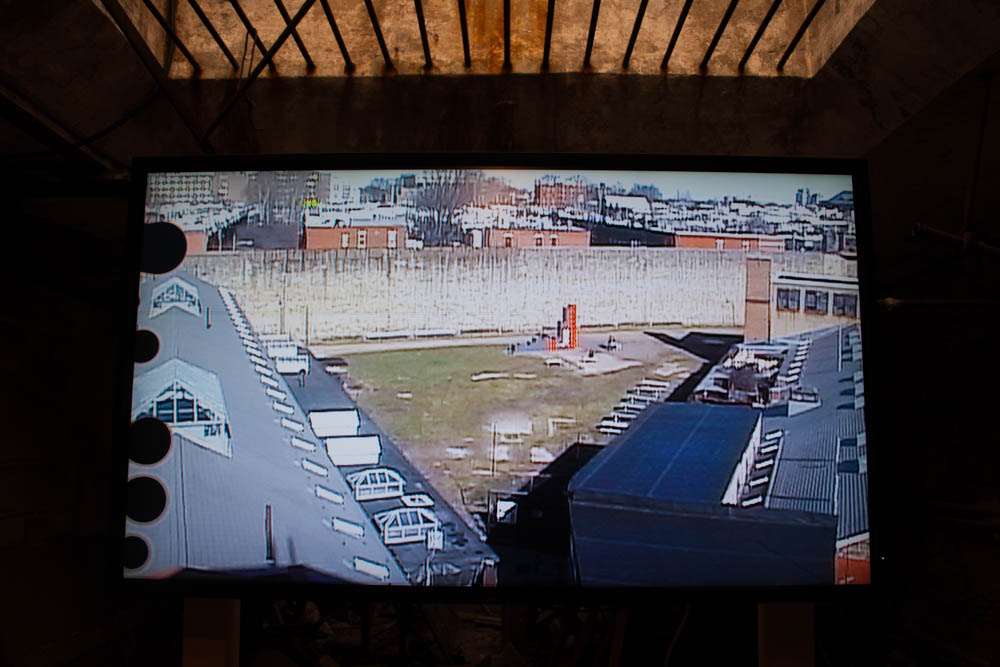
Over the years, ESP adapted to its evolving needs. Cellblocks were added, a chapel was built, and, in the 1920s, ESP became the first prison in the US to build a synagogue.
The hospital was an impressive size, taking up the entire Cellblock 3, complete with an operating room, recovery ward, x-ray equipment, laboratories and a pharmacy. There was even a solarium for TB patients and a psychiatric unit.
Cellblock 3 is only accessible with a guide, but apparently the rooms contain the original beds and reflecting lights. On the door of the operating room a sign still hangs: Dr. Goracci, Medical Director.
ESP even had its own barber’s shop, to which prison wardens brought their children to for haircuts.
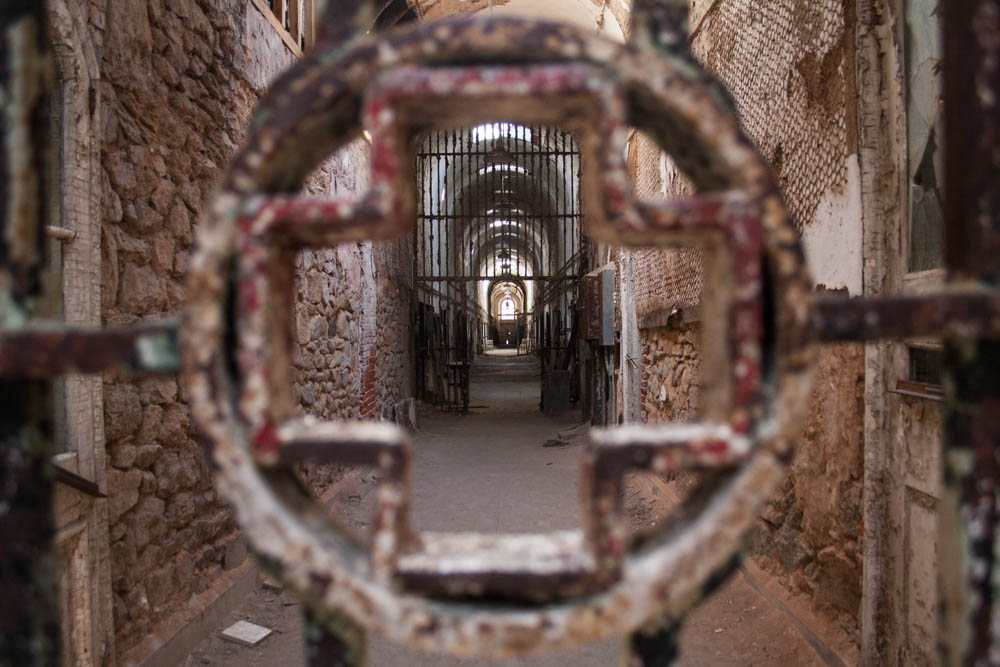
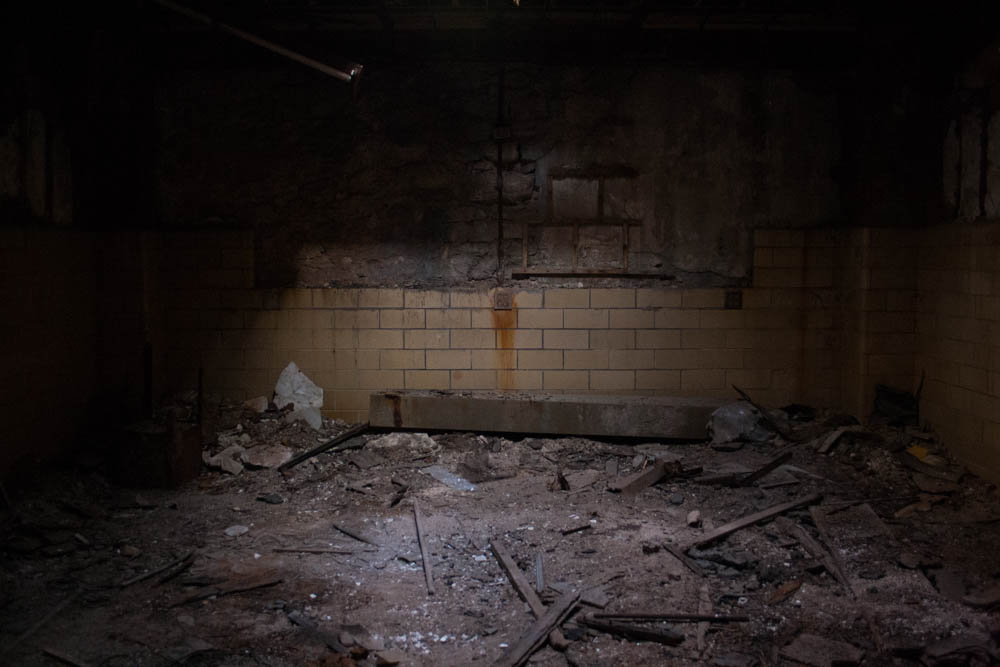
But by the 1960s, the building started to weigh under its 142-year history. When the penitentiary, designed to reform rather than punish, closed its doors in 1971, it had an entire cell block dedicated to housing prisoners on death row.
Even though some of the building is restricted, we spent a good 3 hours walking around the prison. And even then, we didn’t see everything.
Looking through locked gates onto dark, silent hallways made me think that was a good thing.
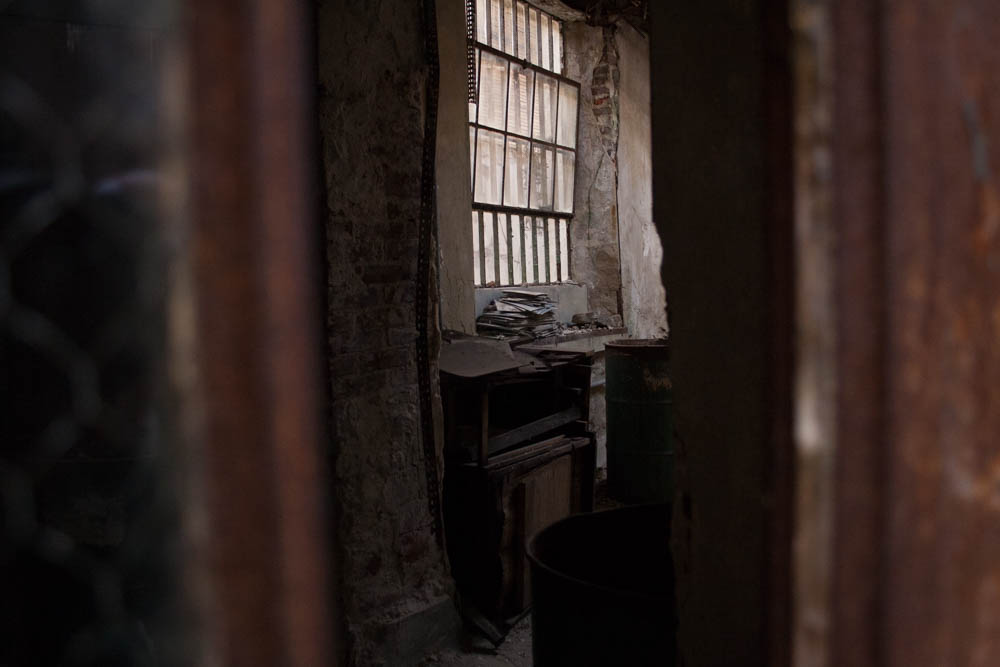
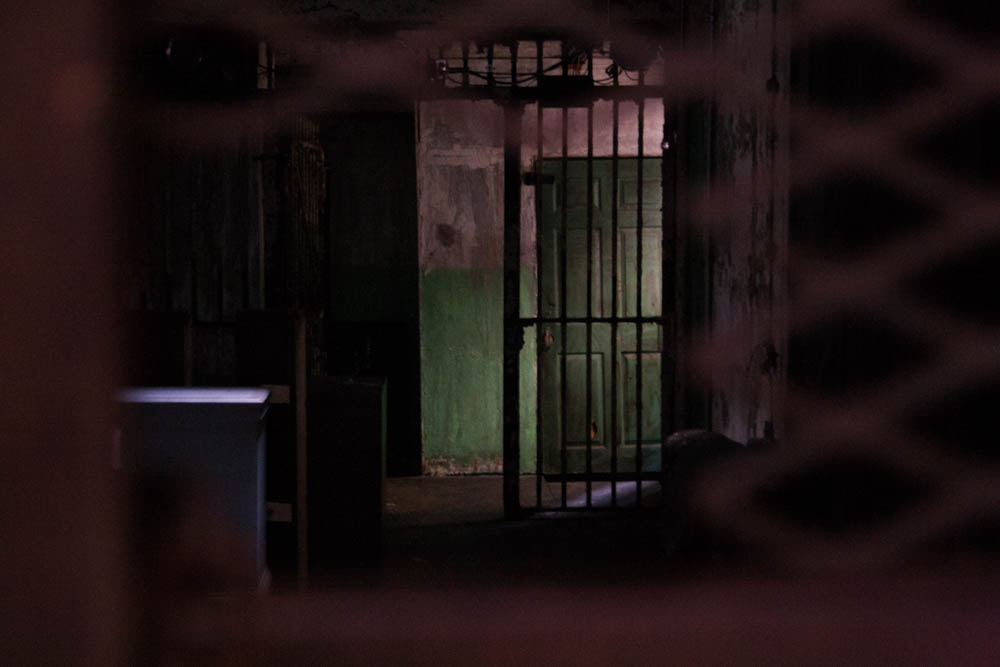
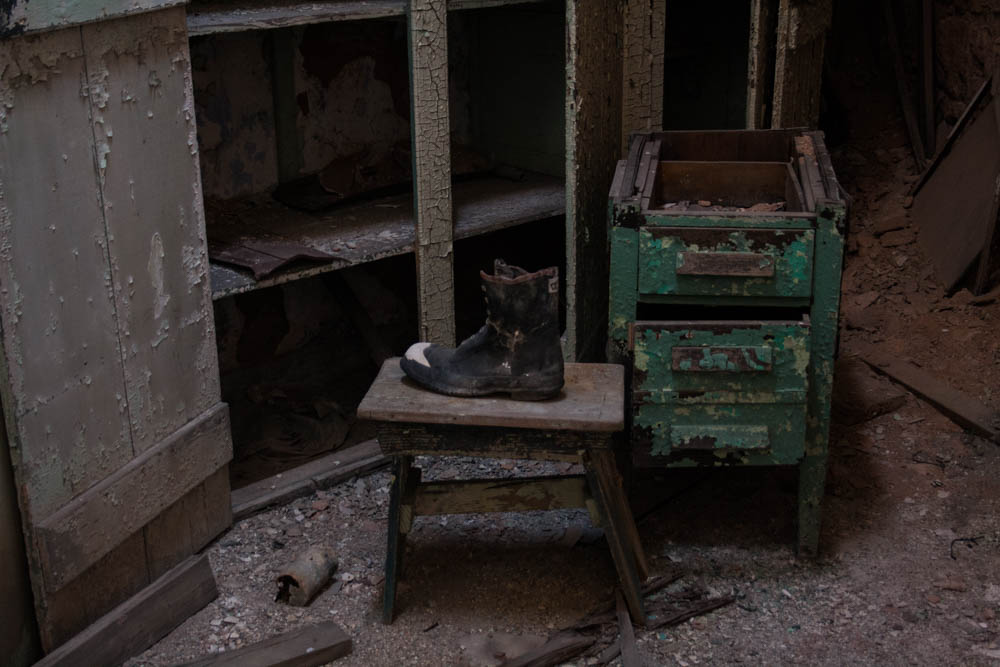
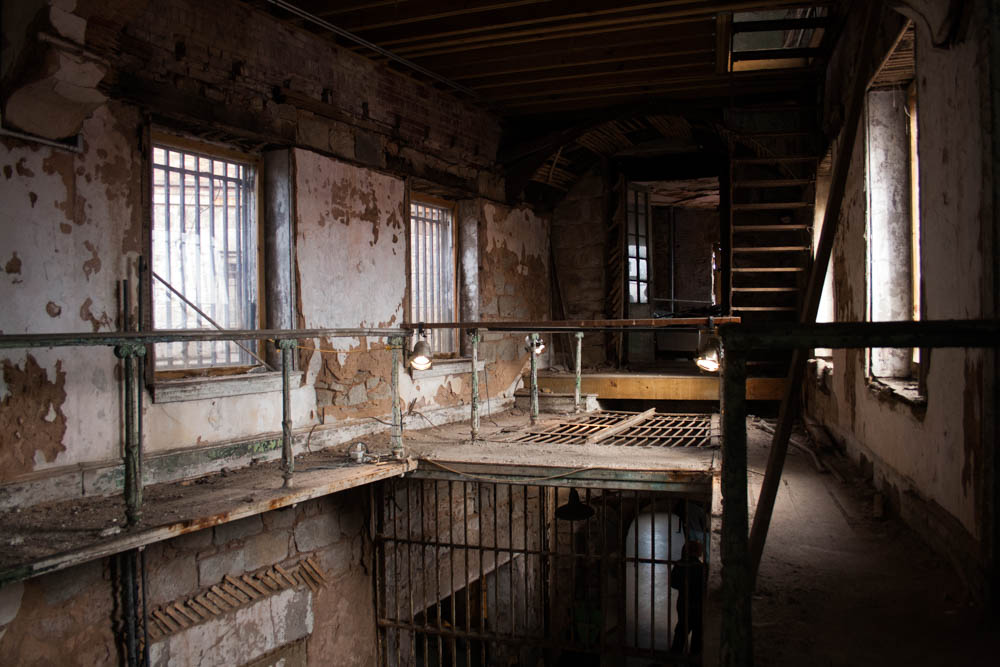
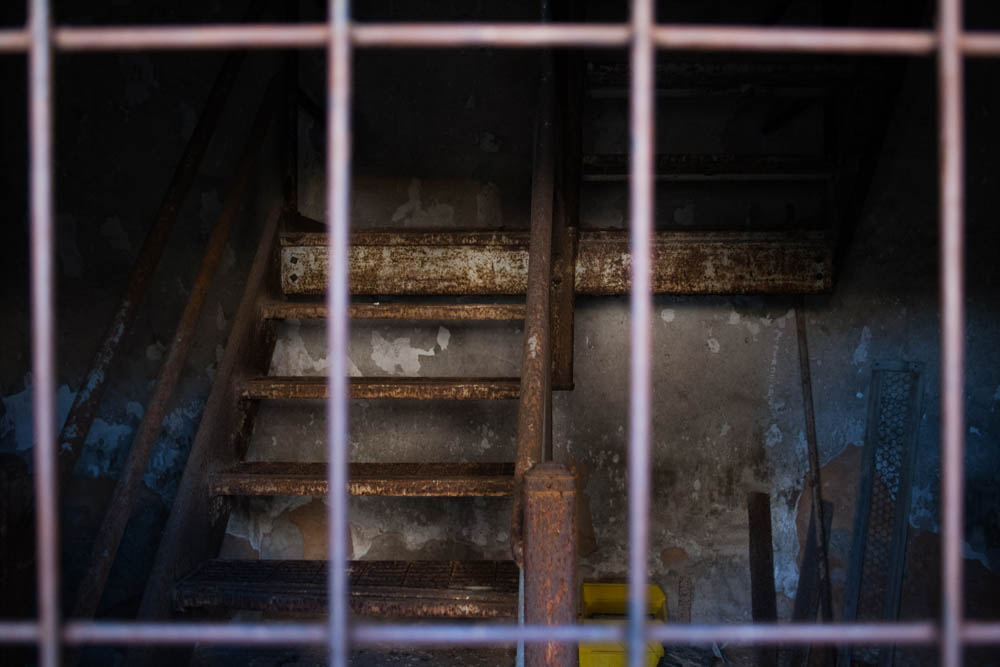
The building complex stretches over 11 acres of land, and it’s easy to imagine the bustling city-within-a-city it must have been in its heyday.
It’s the perfect site to film, and, in fact, has been featured as the background to Tina Turner’s One of the Living, a mental institution in 12 Monkeys and an abandoned junkyard in Transformers: Revenge of the Fallen.
I could have stayed all day, but we had a bus to catch and Danielle had had about enough. Exploring creepy places definitely does not excite her the way it does me.
In any case, I couldn’t hope to see and understand all of ESP’s 142-year history in one day. I’d just have to come back.
We ended up in the rotunda where a security guard sat huddled next to a heater. I wondered about his time at the prison and what he thought of the place, and whether he was one of the people who had seen or heard anything strange.
But something in his eyes told me he was burdened with ghosts of his own.
And then I remembered, so are we all.
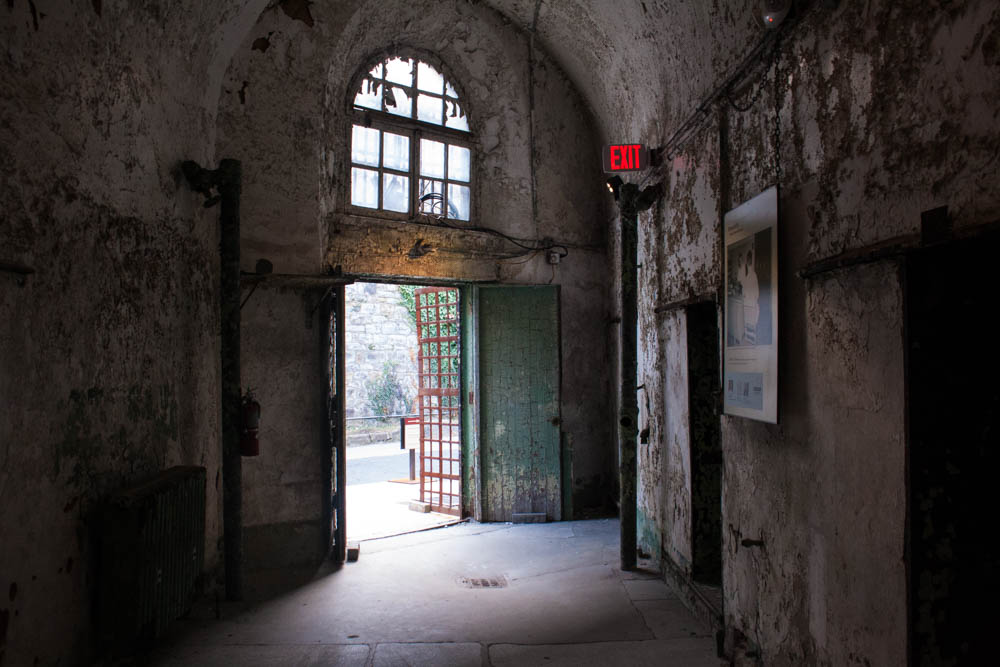
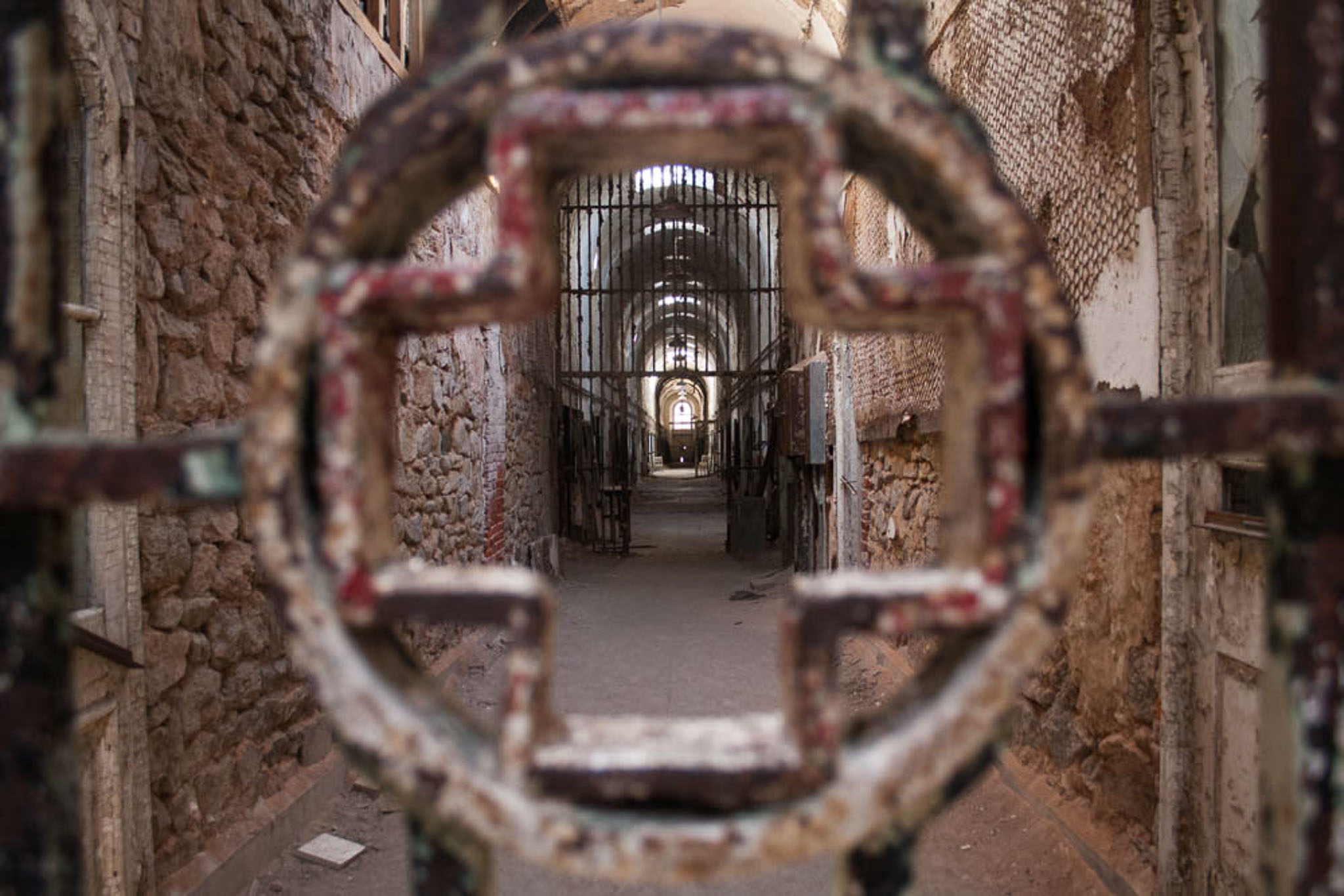





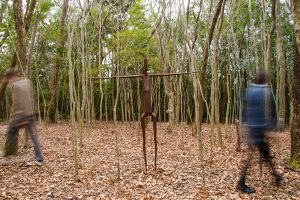

6 Comments
Join the discussion and tell us your opinion.
You write this Simone, its very cool! Almost feel like I was there. Creepy and really great photos.
Thanks Nathan!
Great post with, yet again, phenomenal photos!
I’m kinda creeped out just having read it.
It’s a very creepy place! Thank you 🙂
Amazing photos of a very creepy place. Lovely post 🙂
Thanks Franca 🙂 Very kind words!